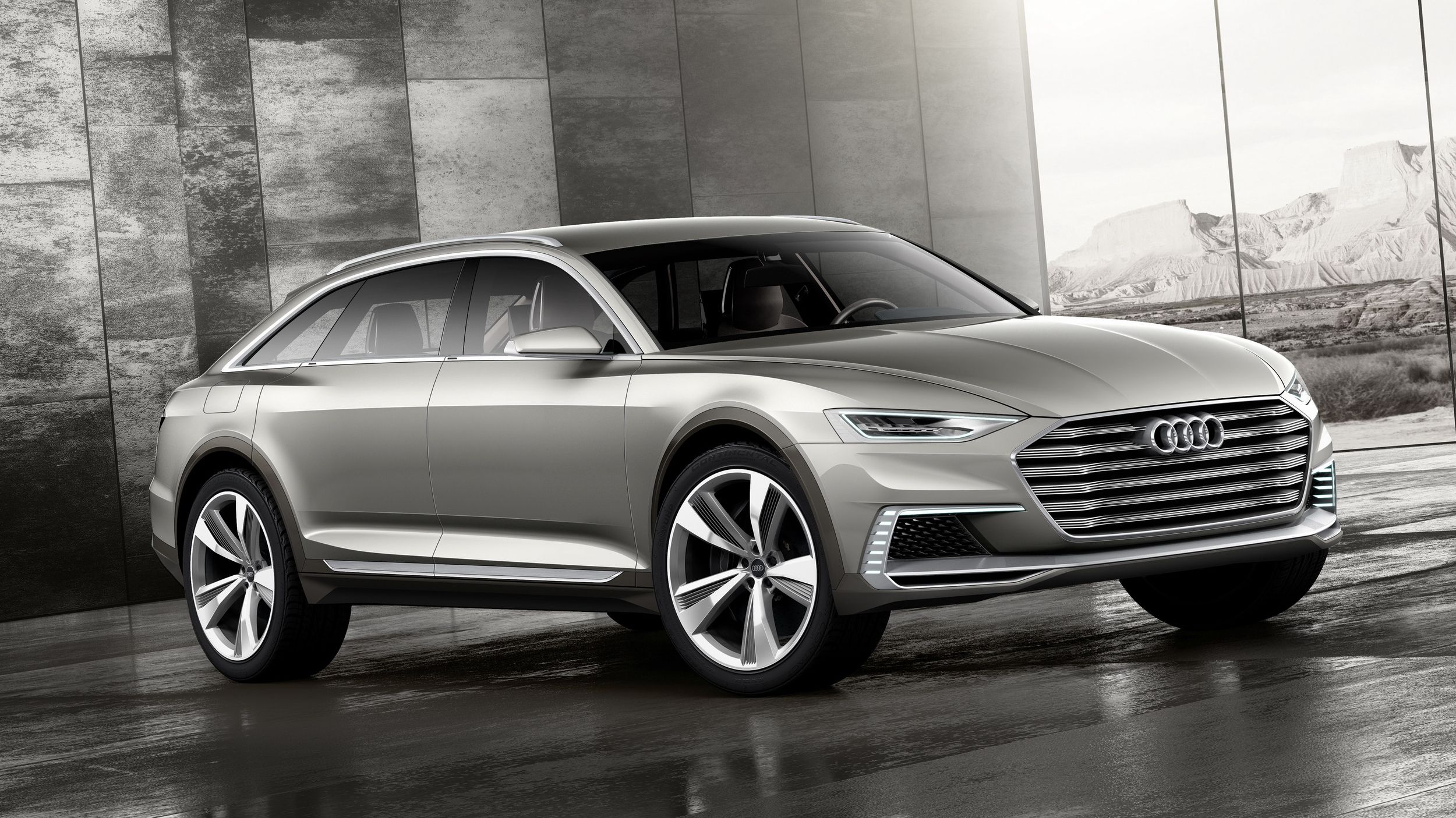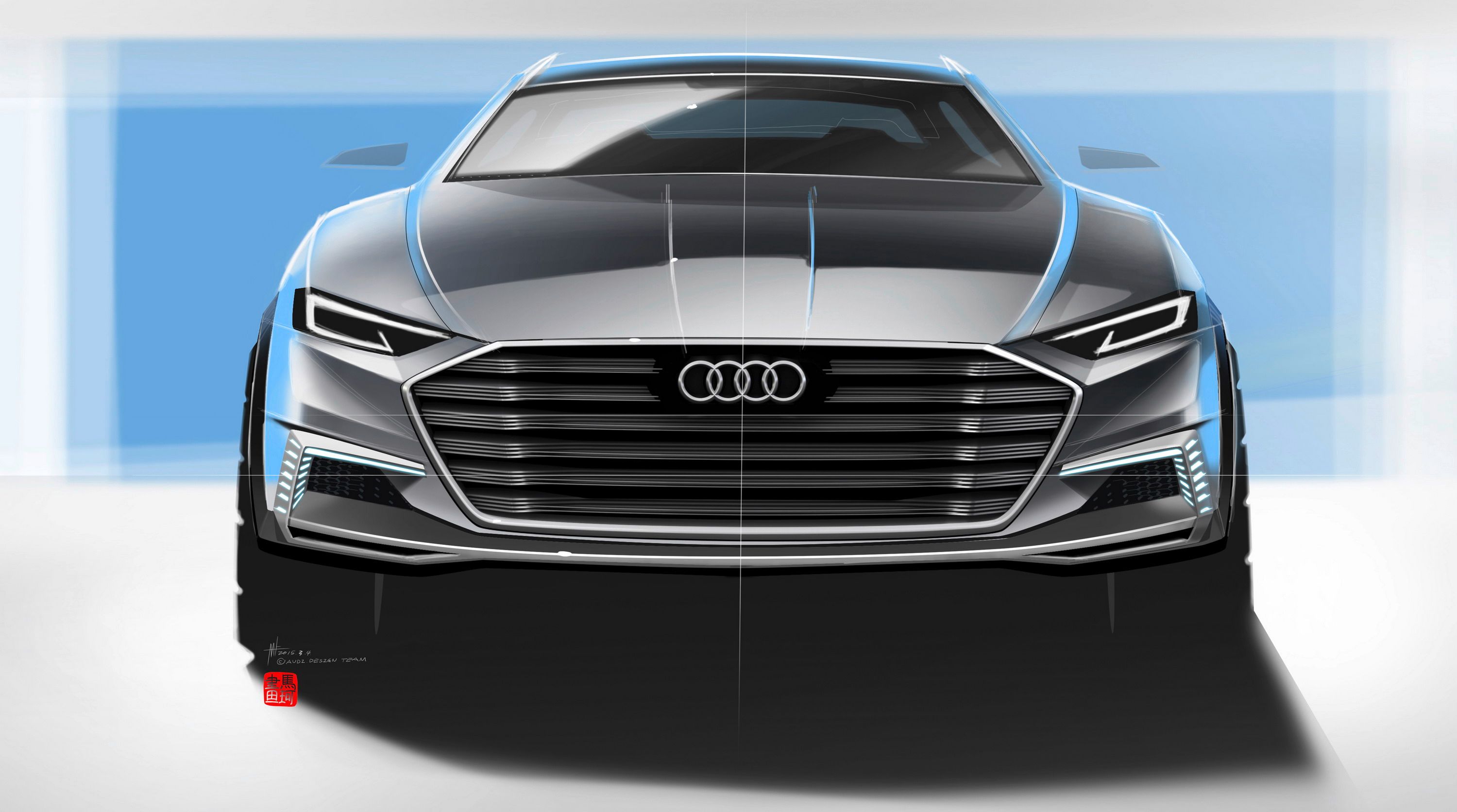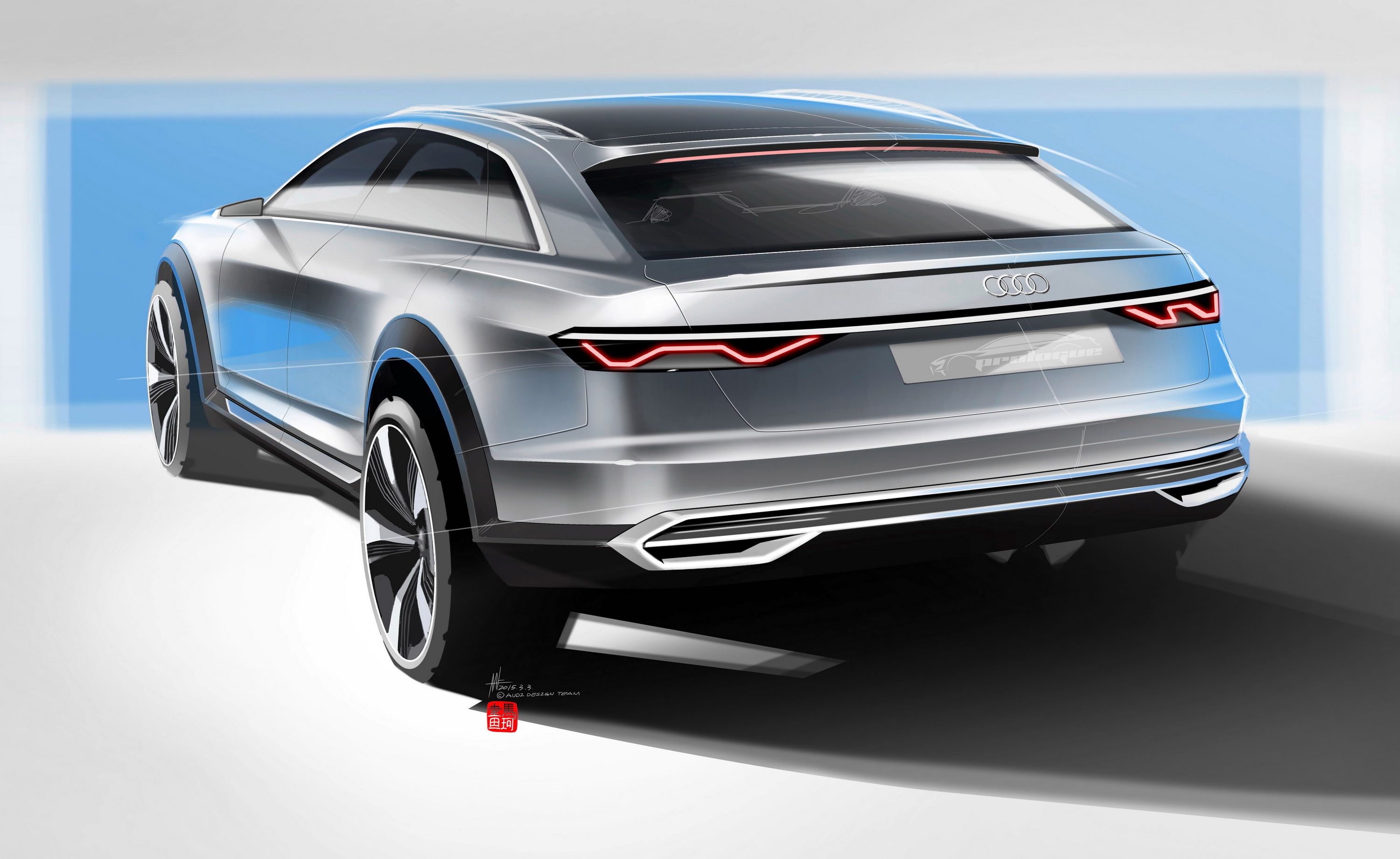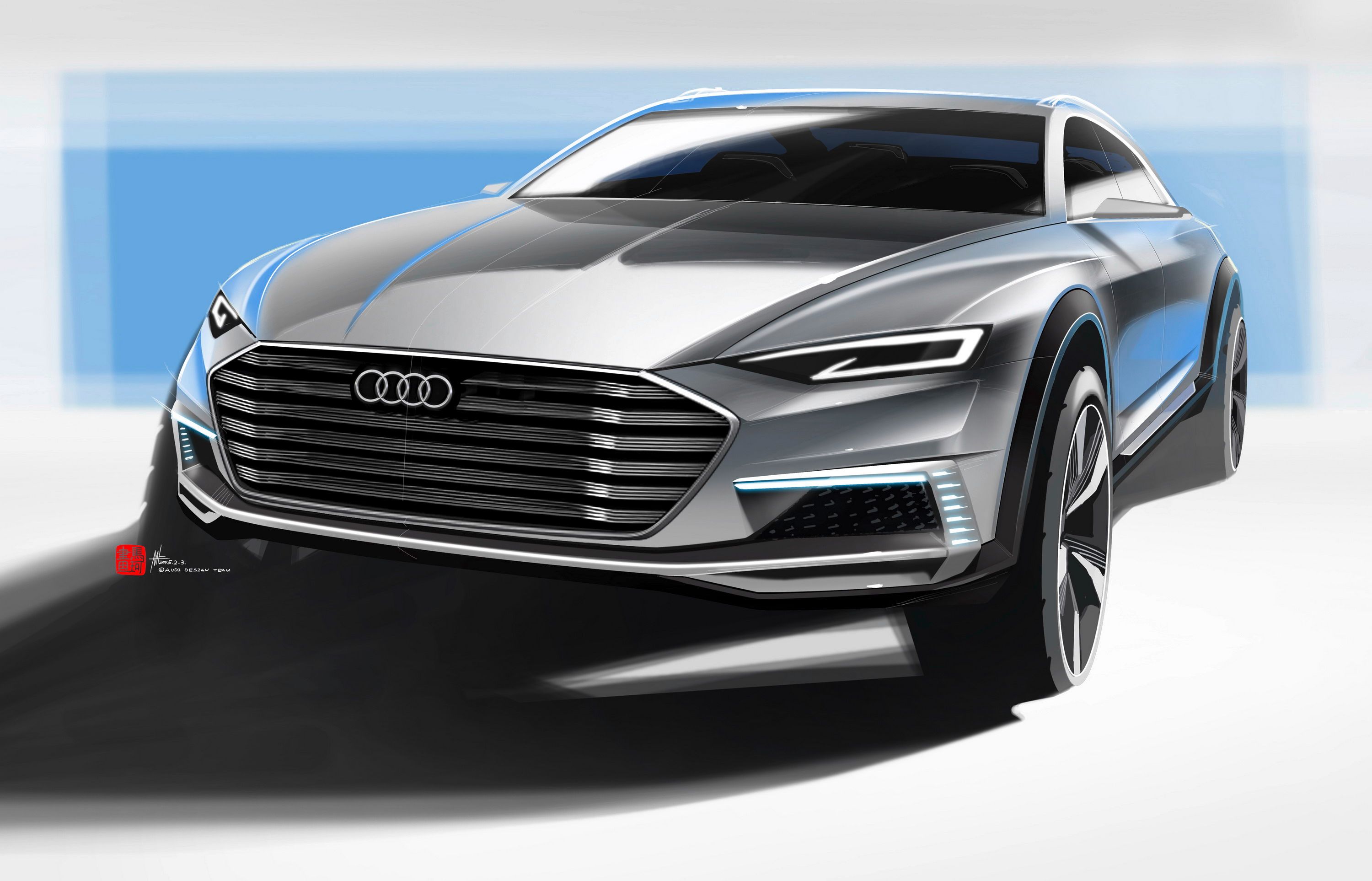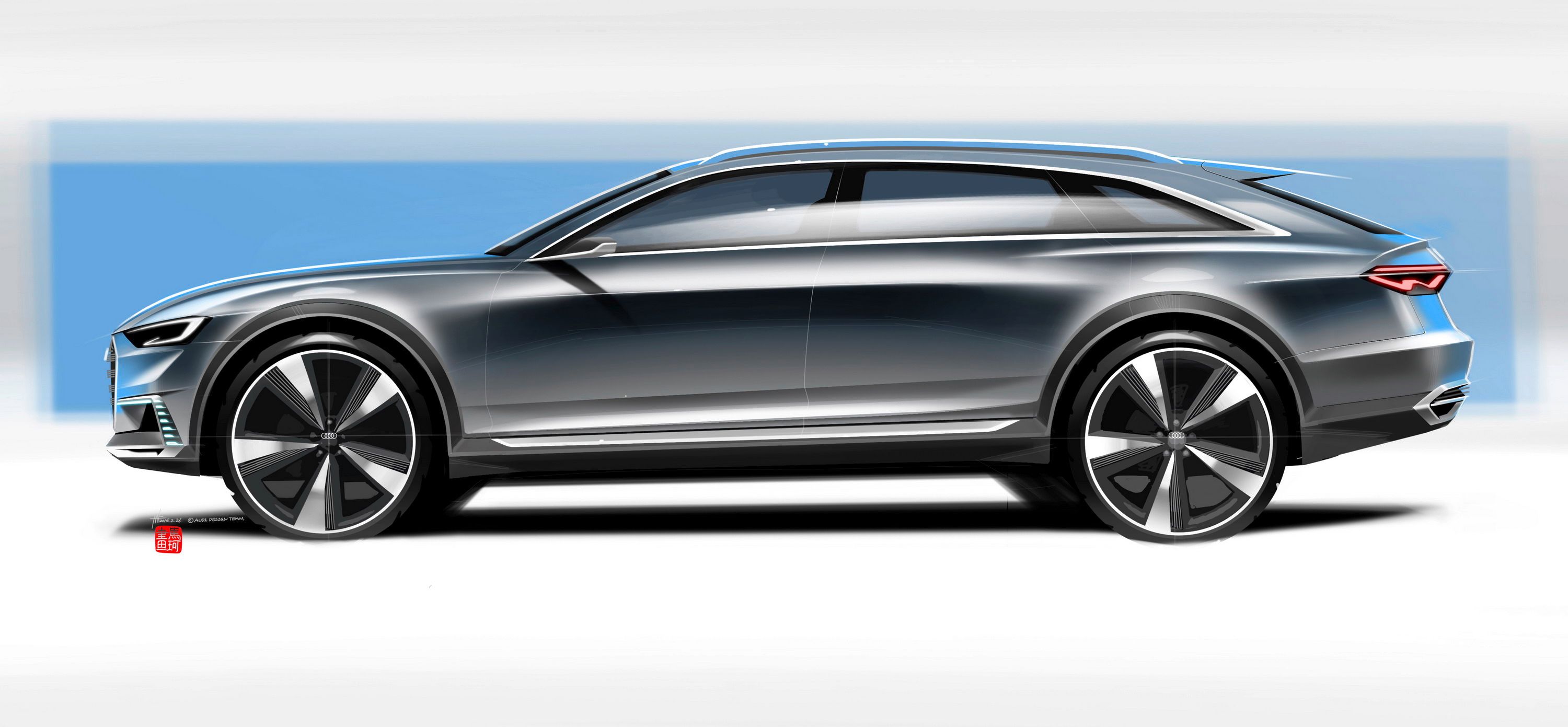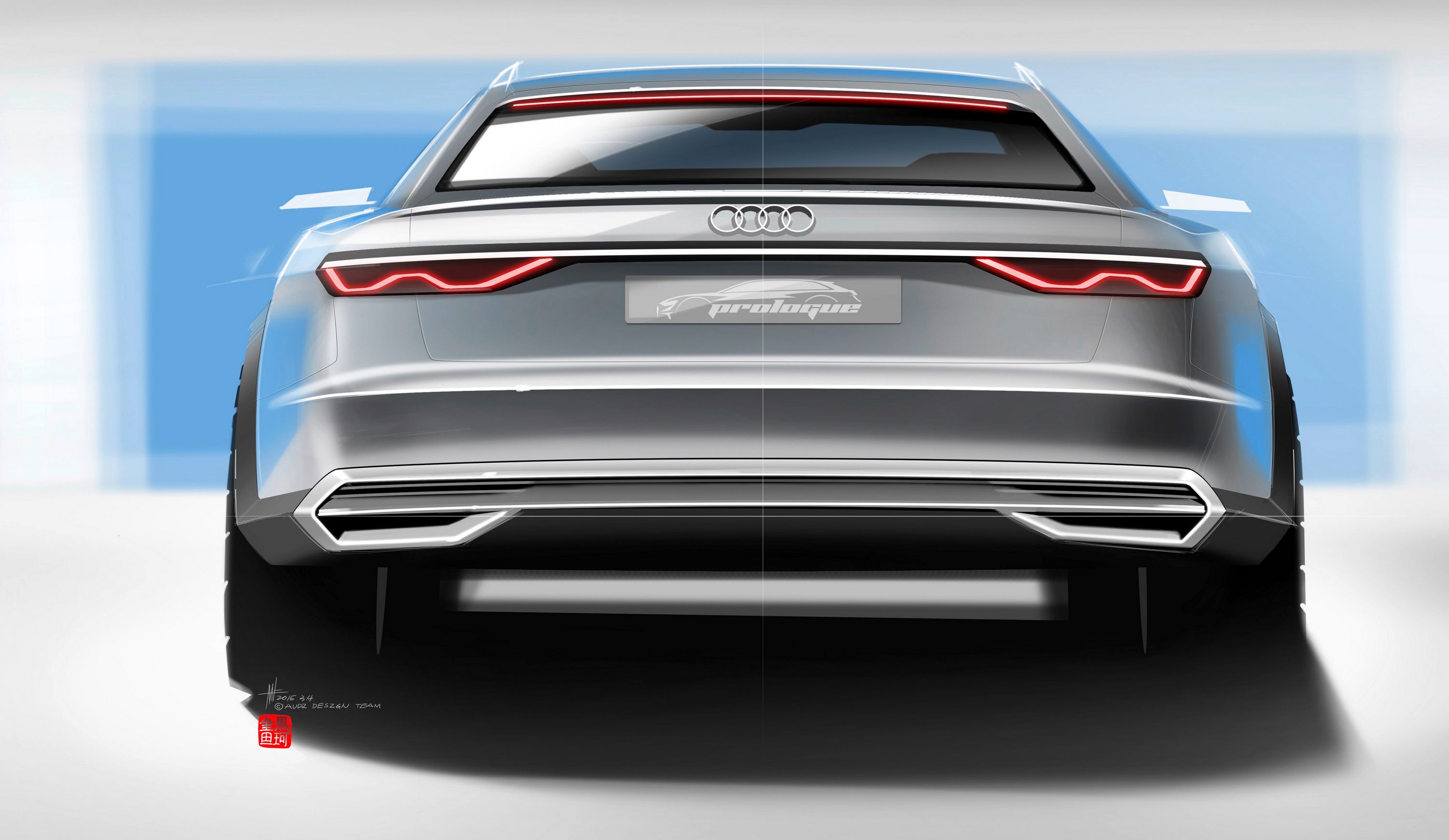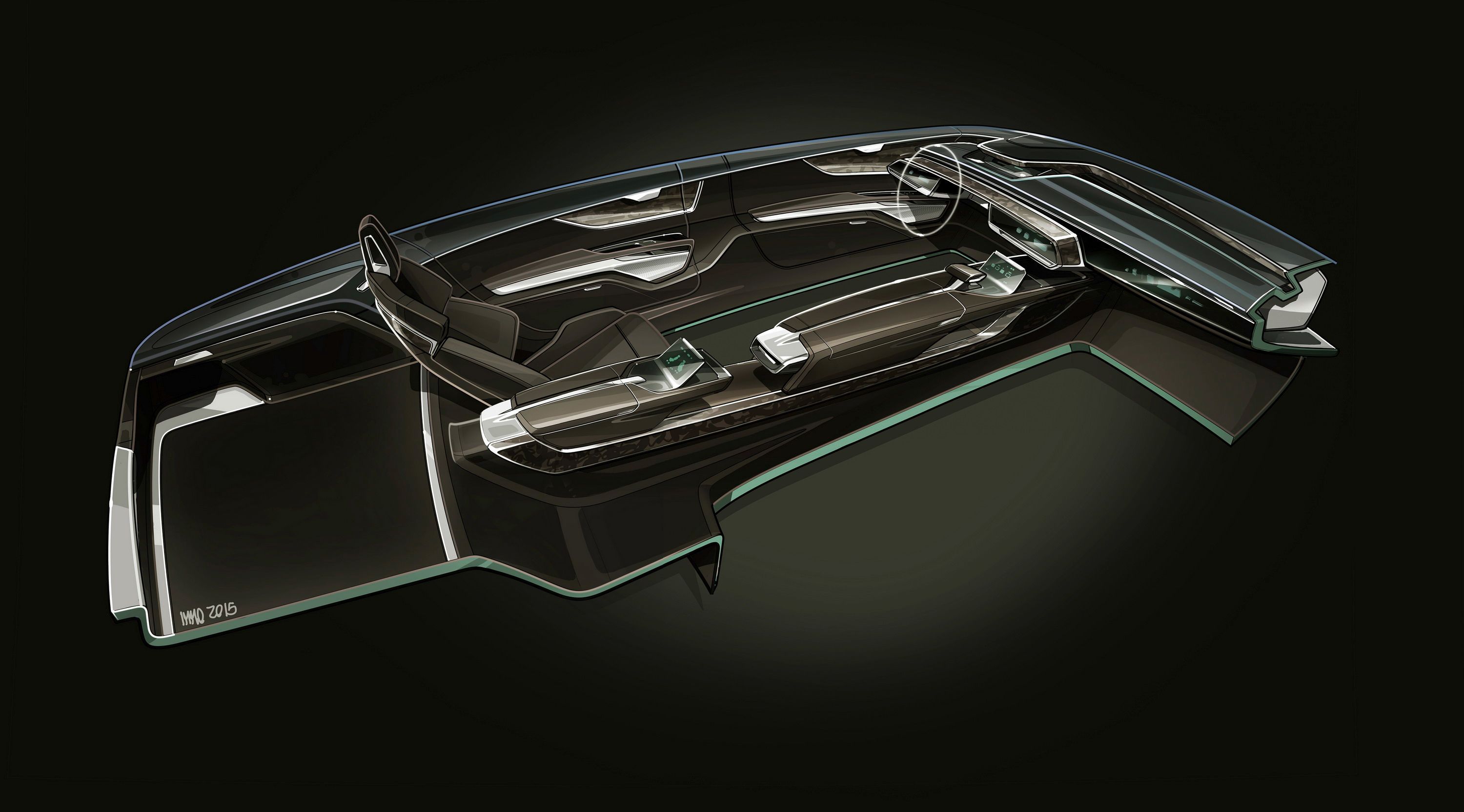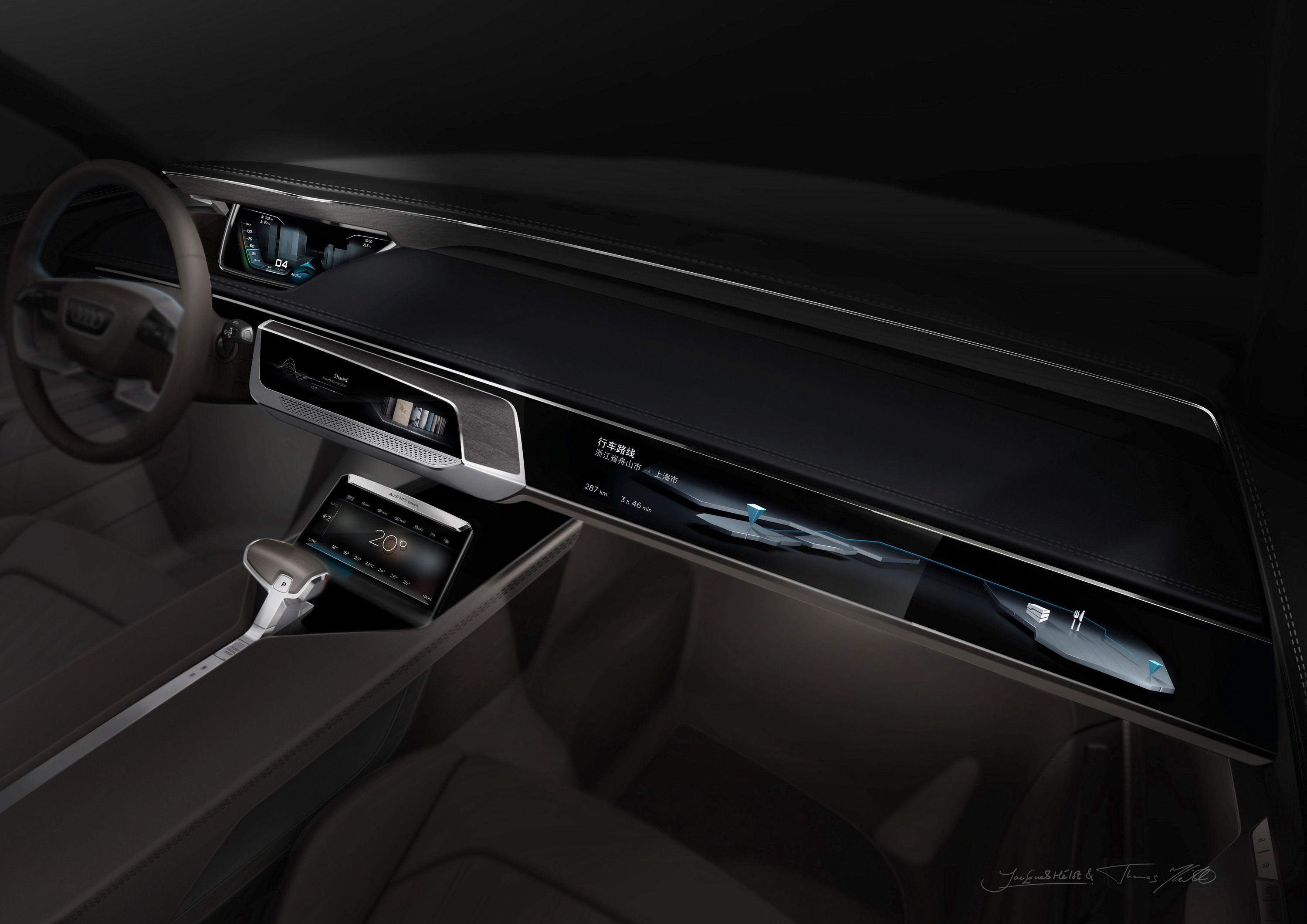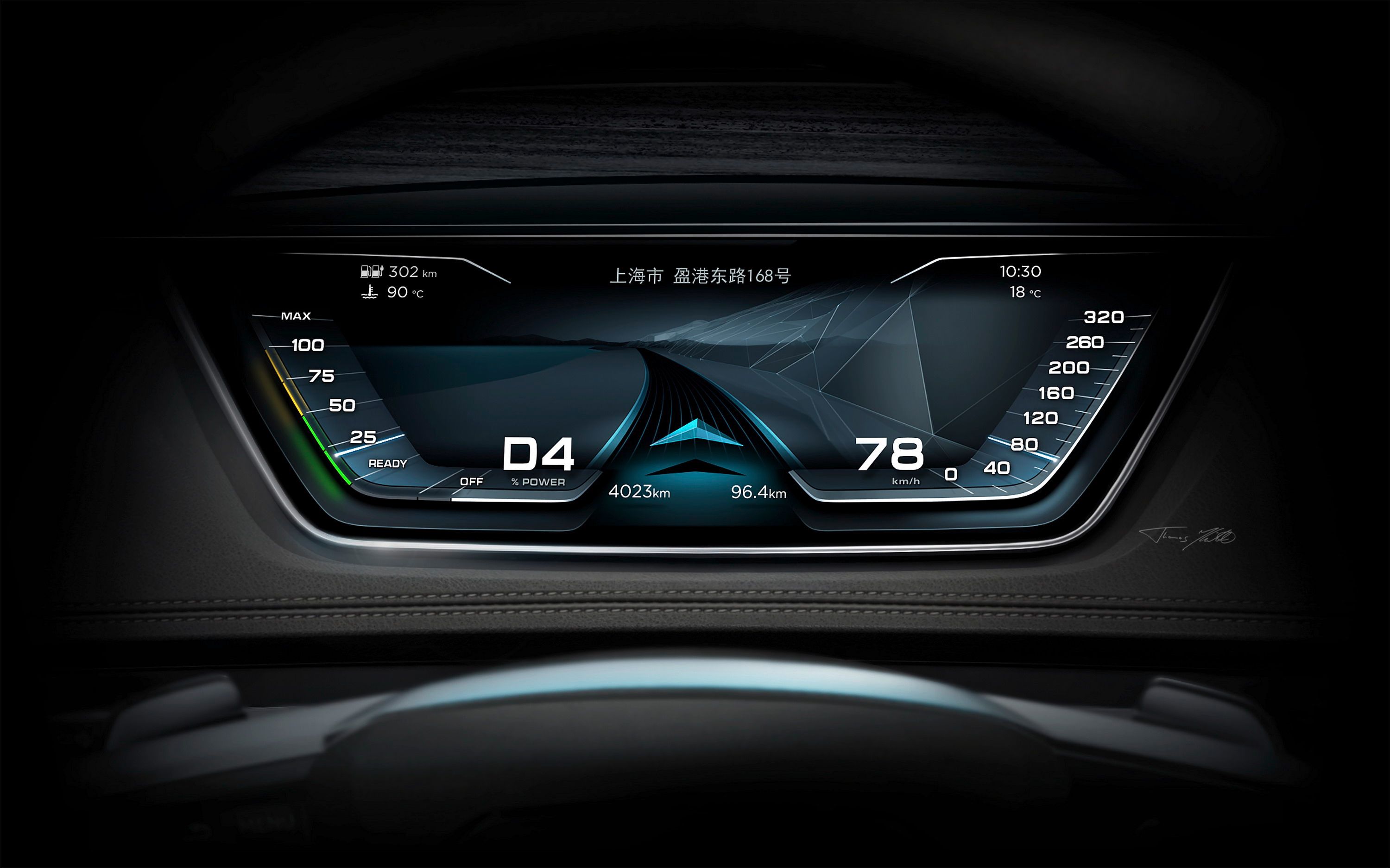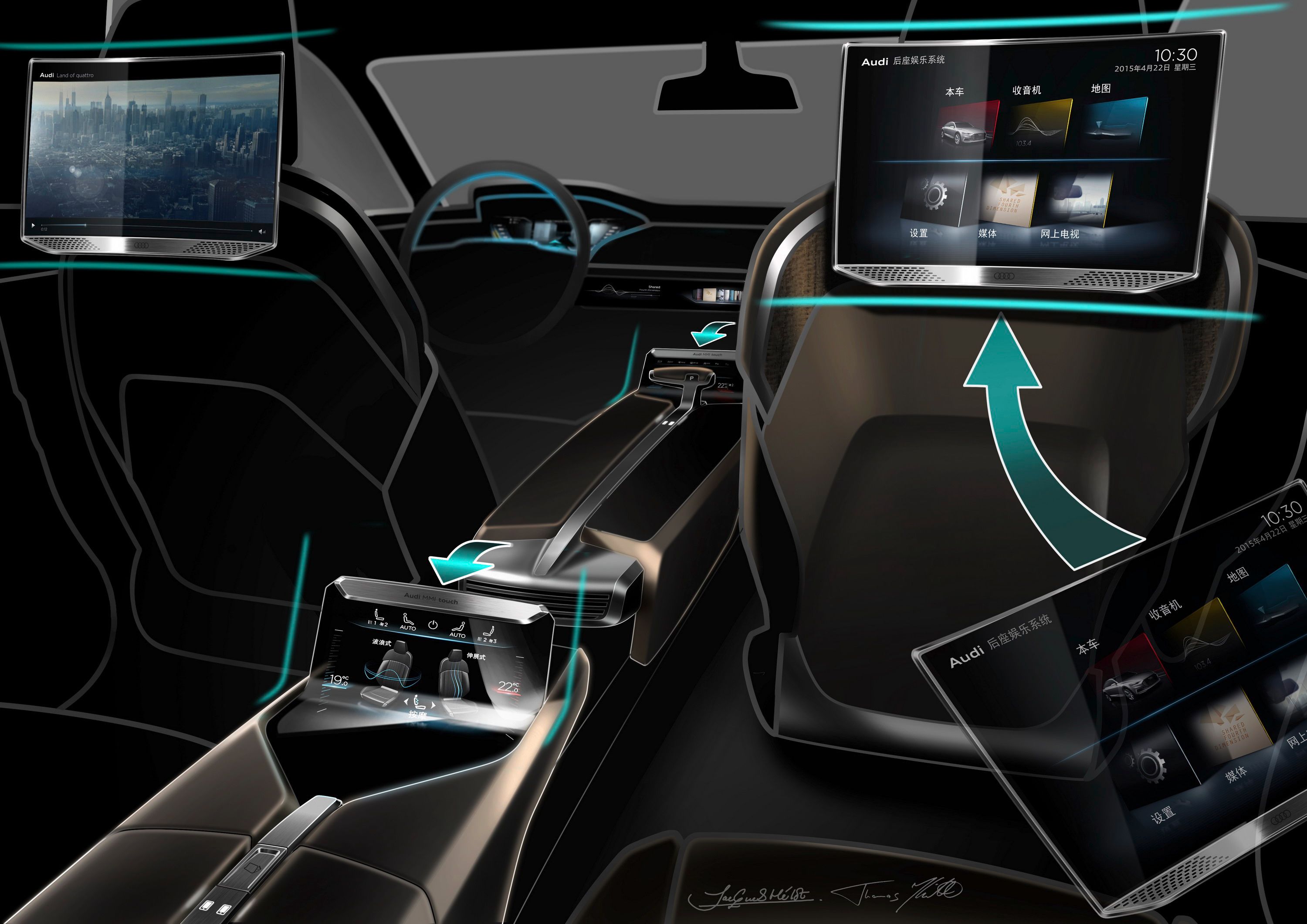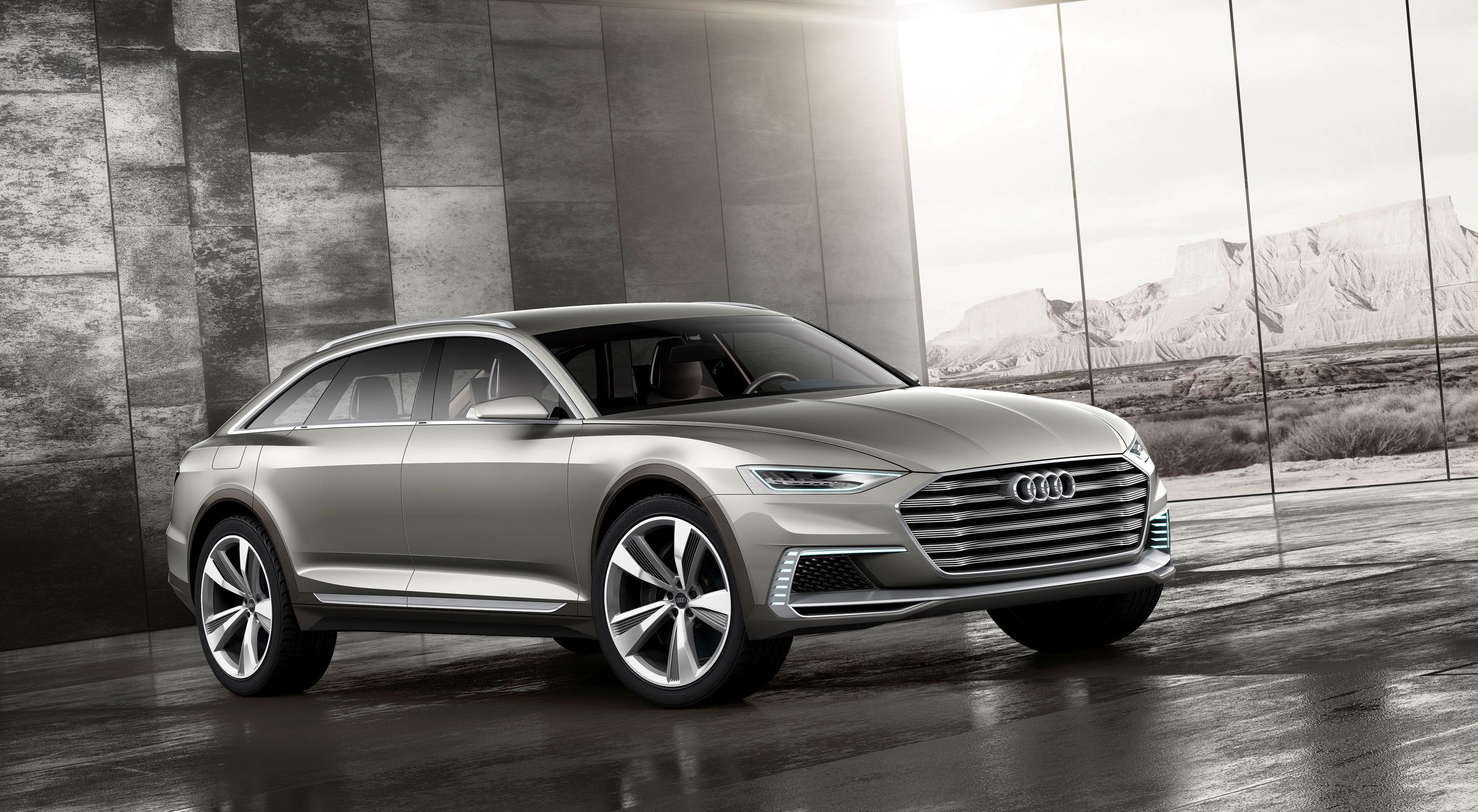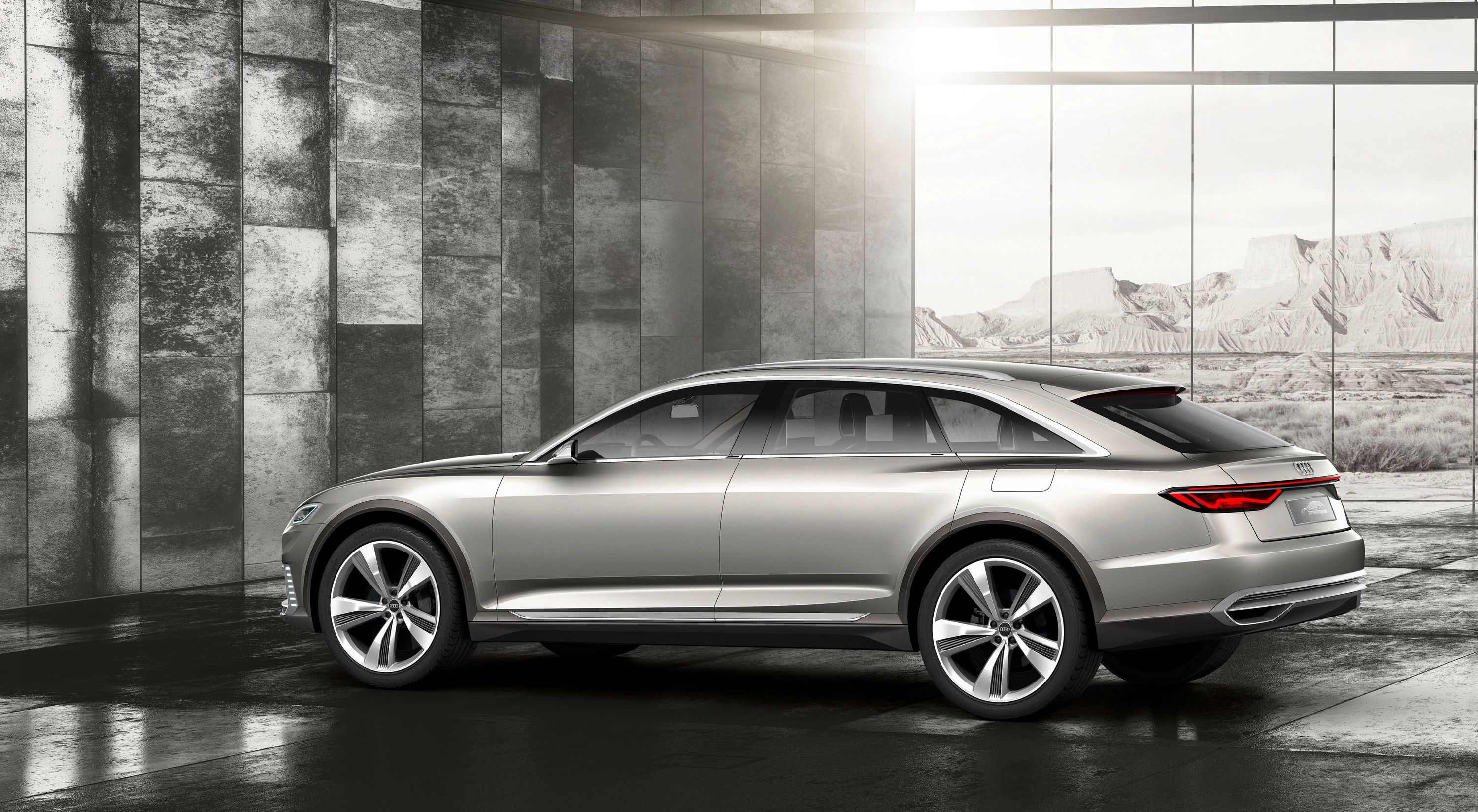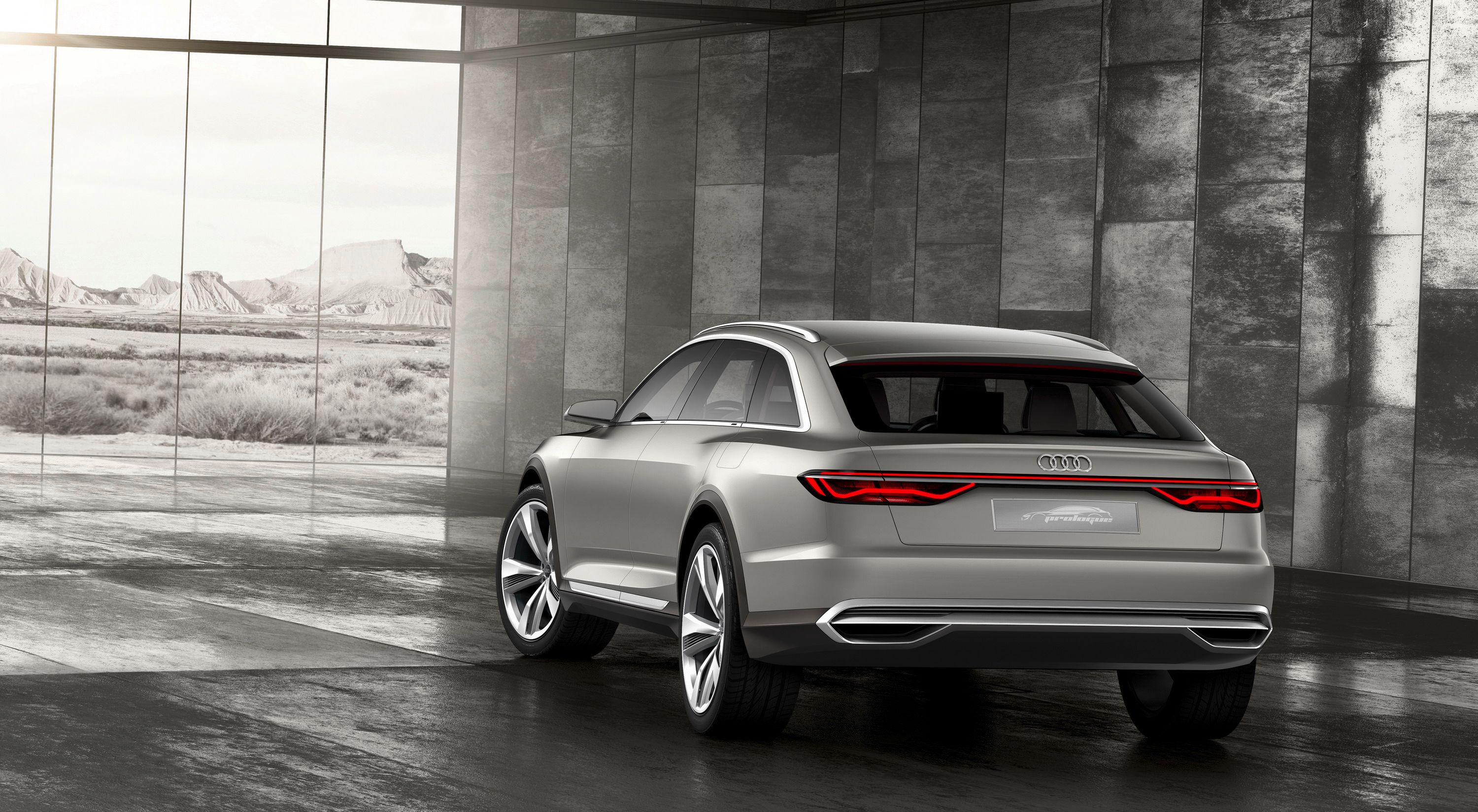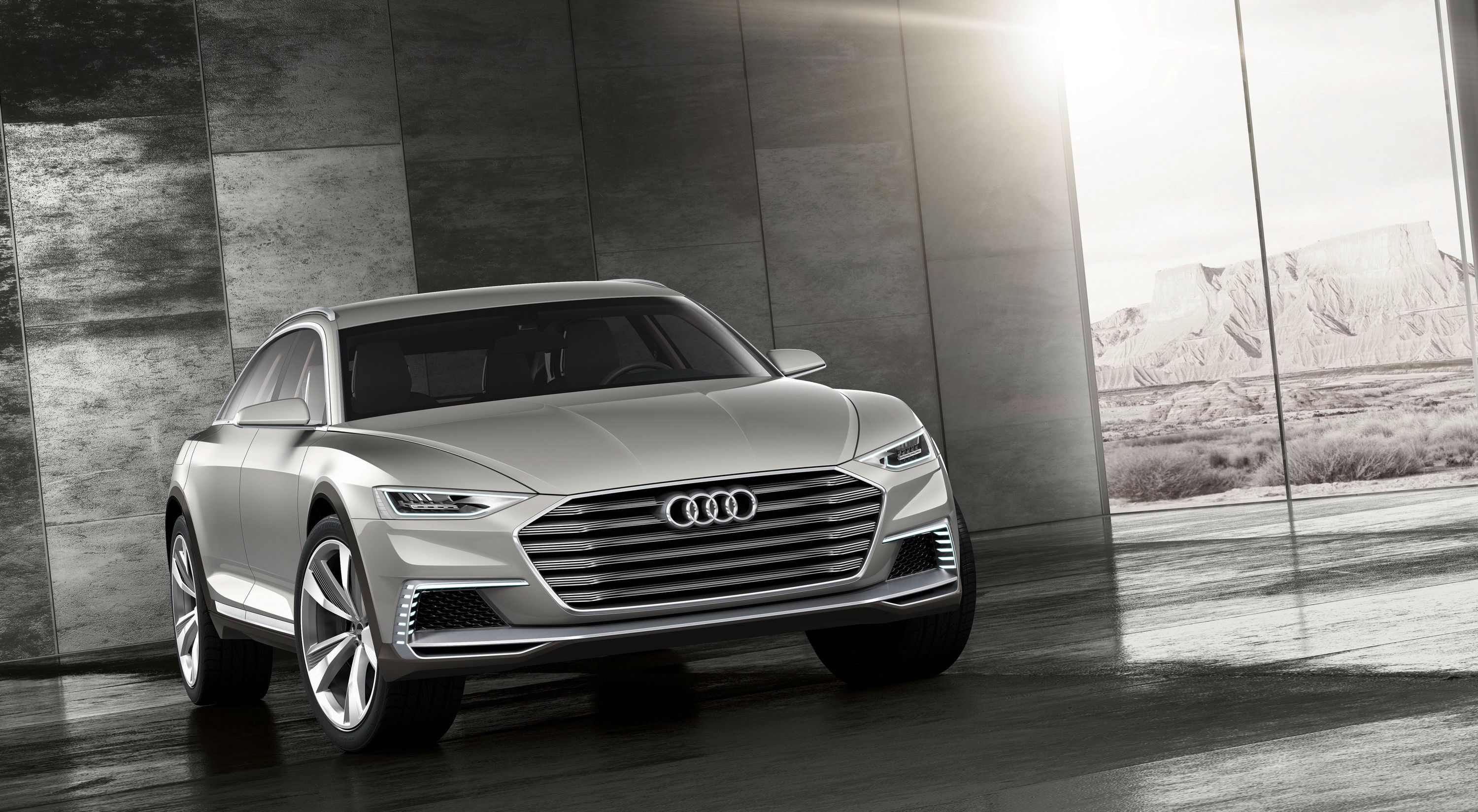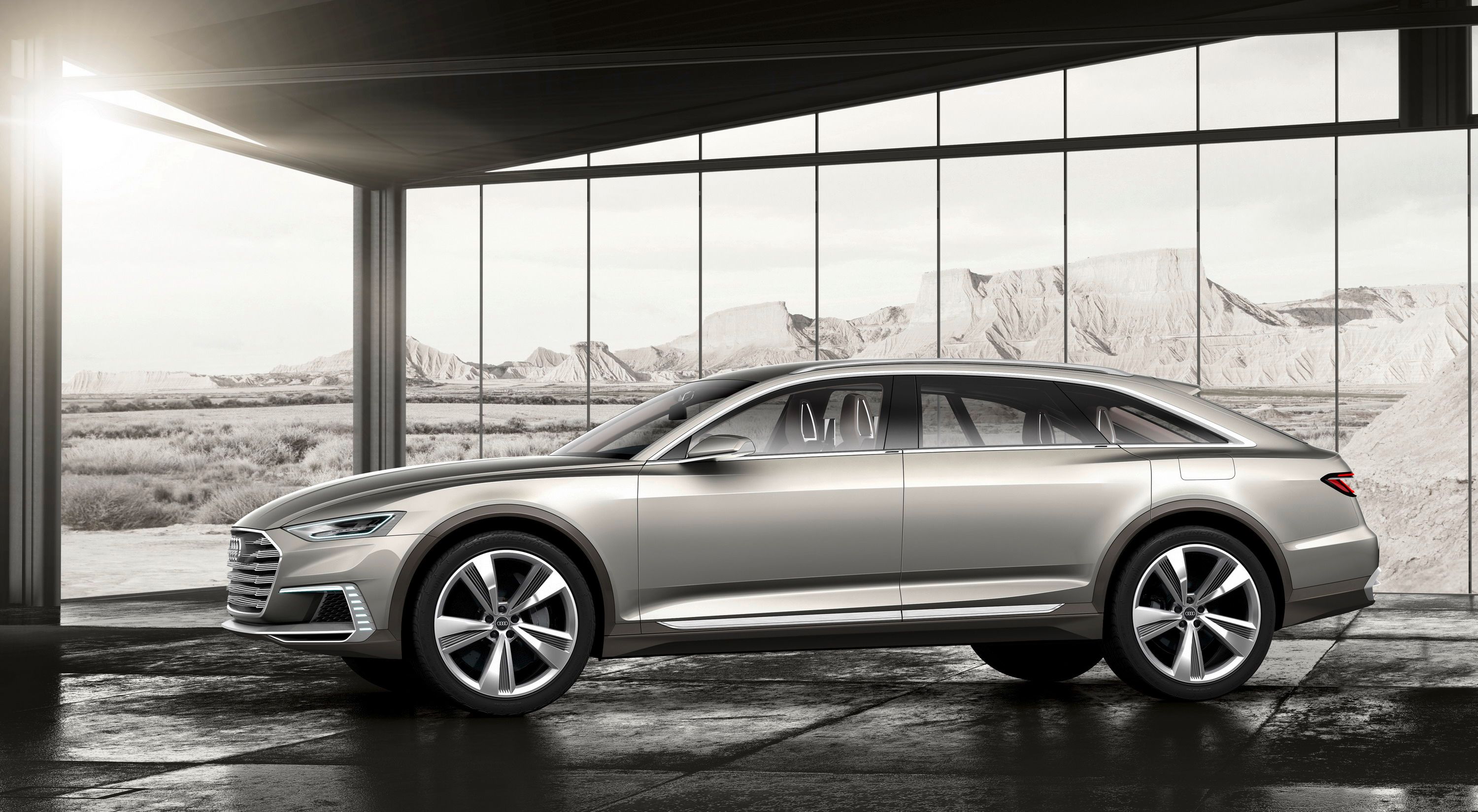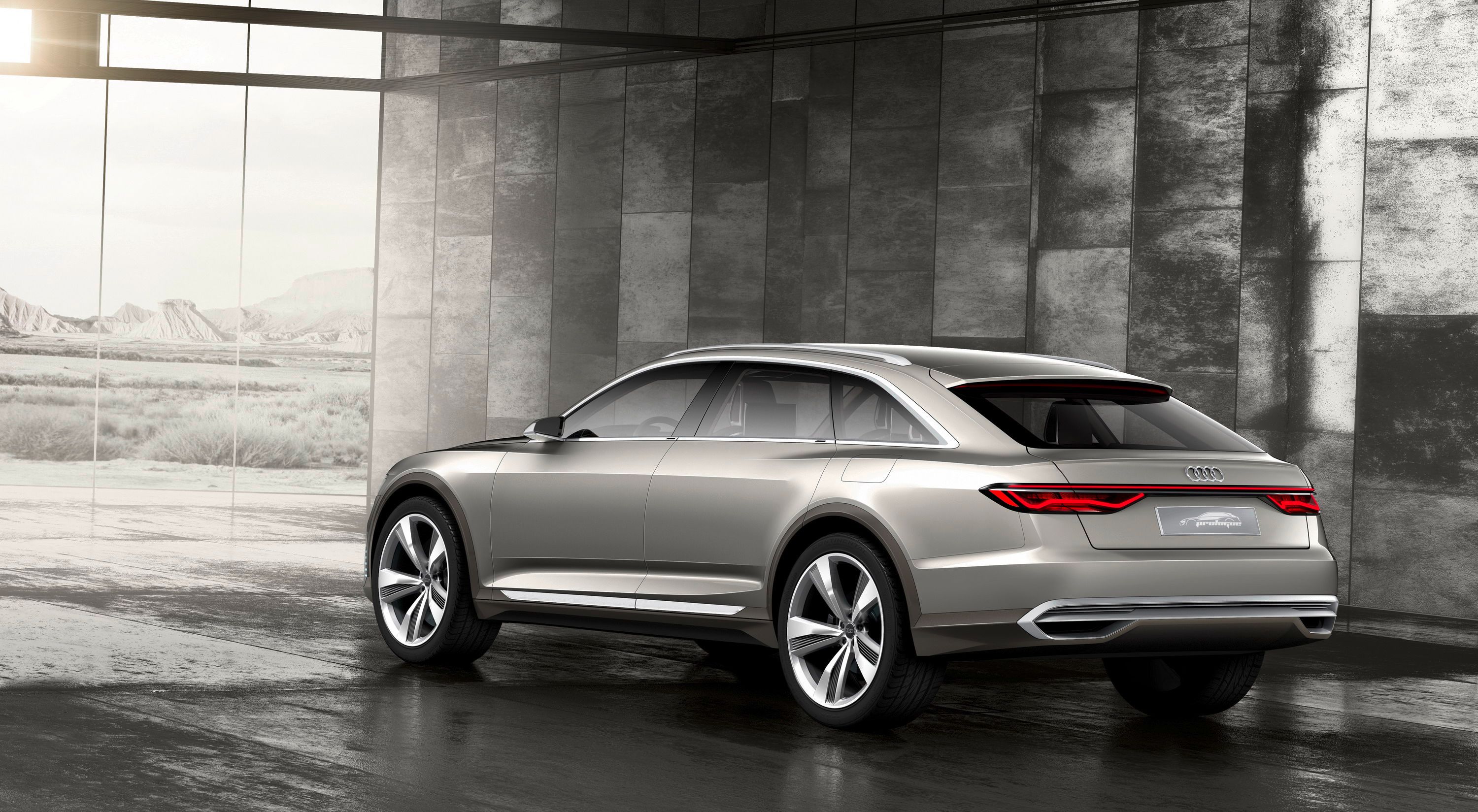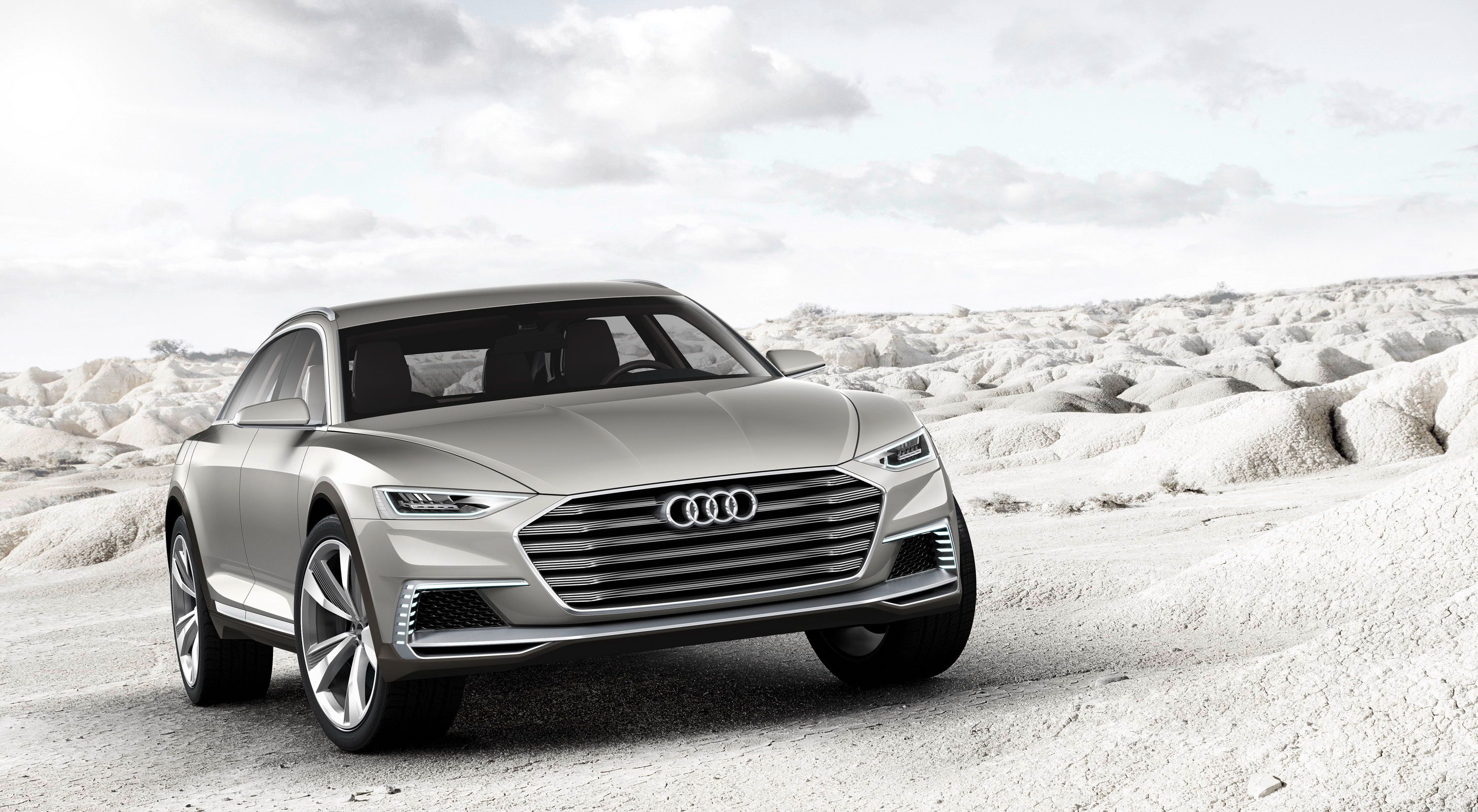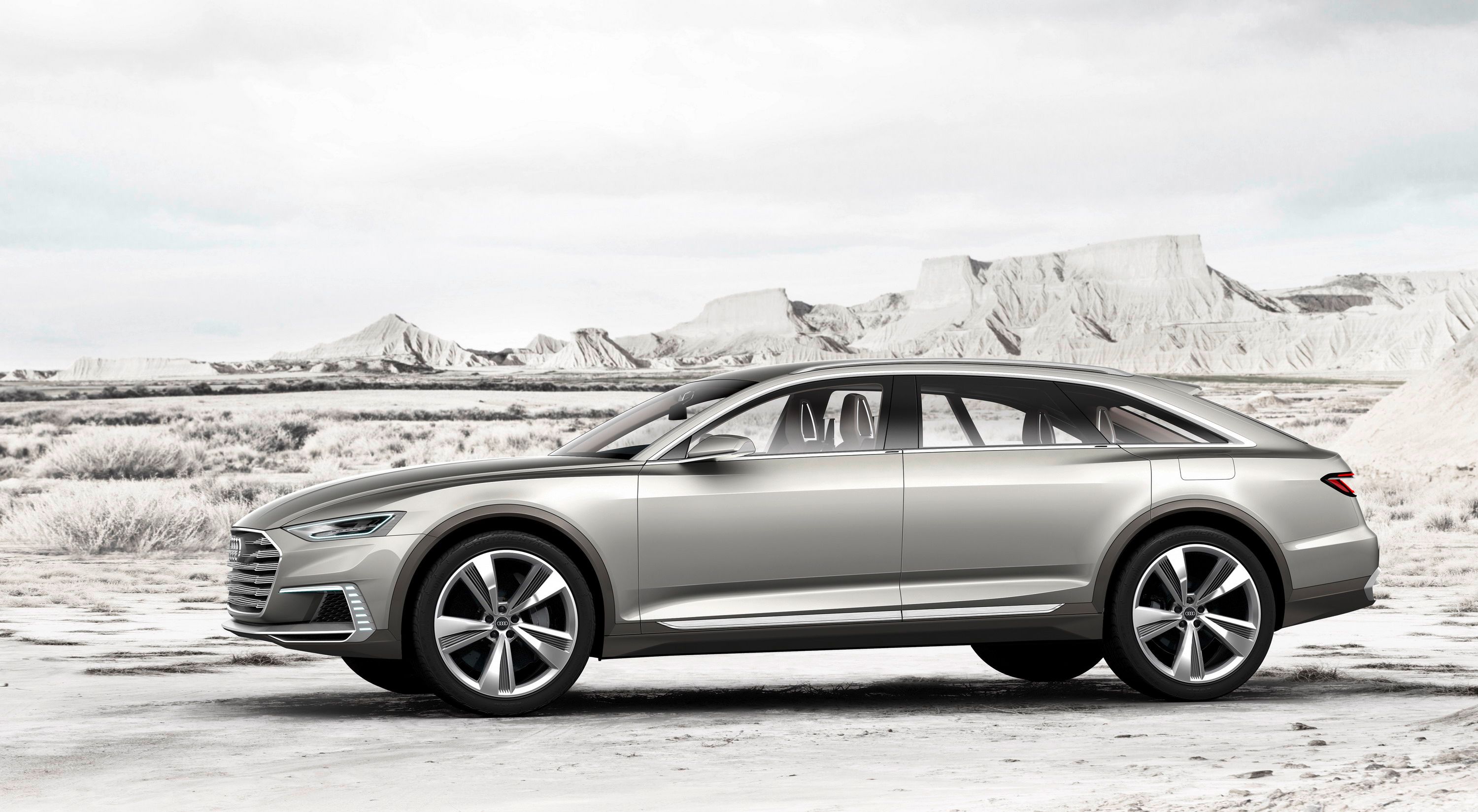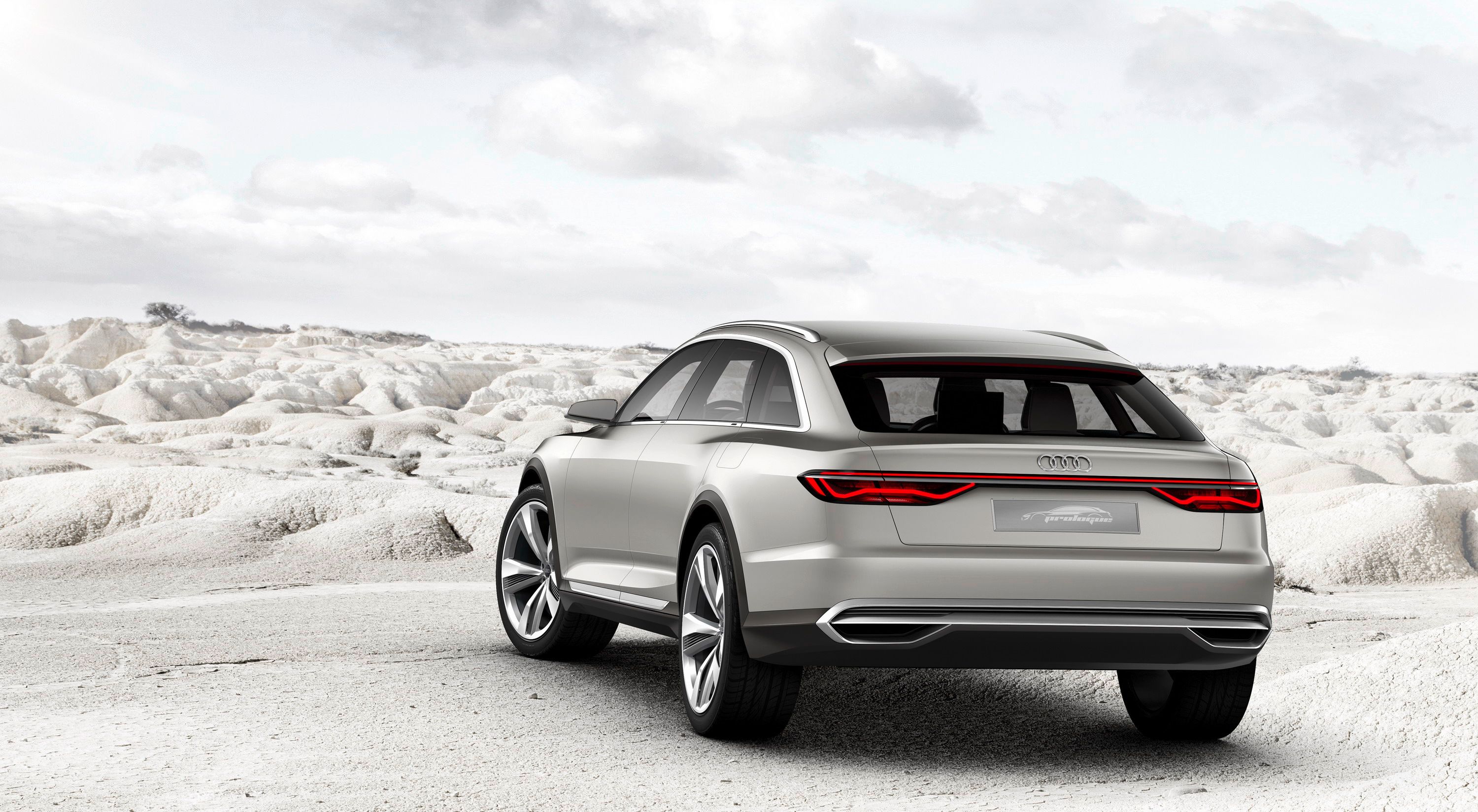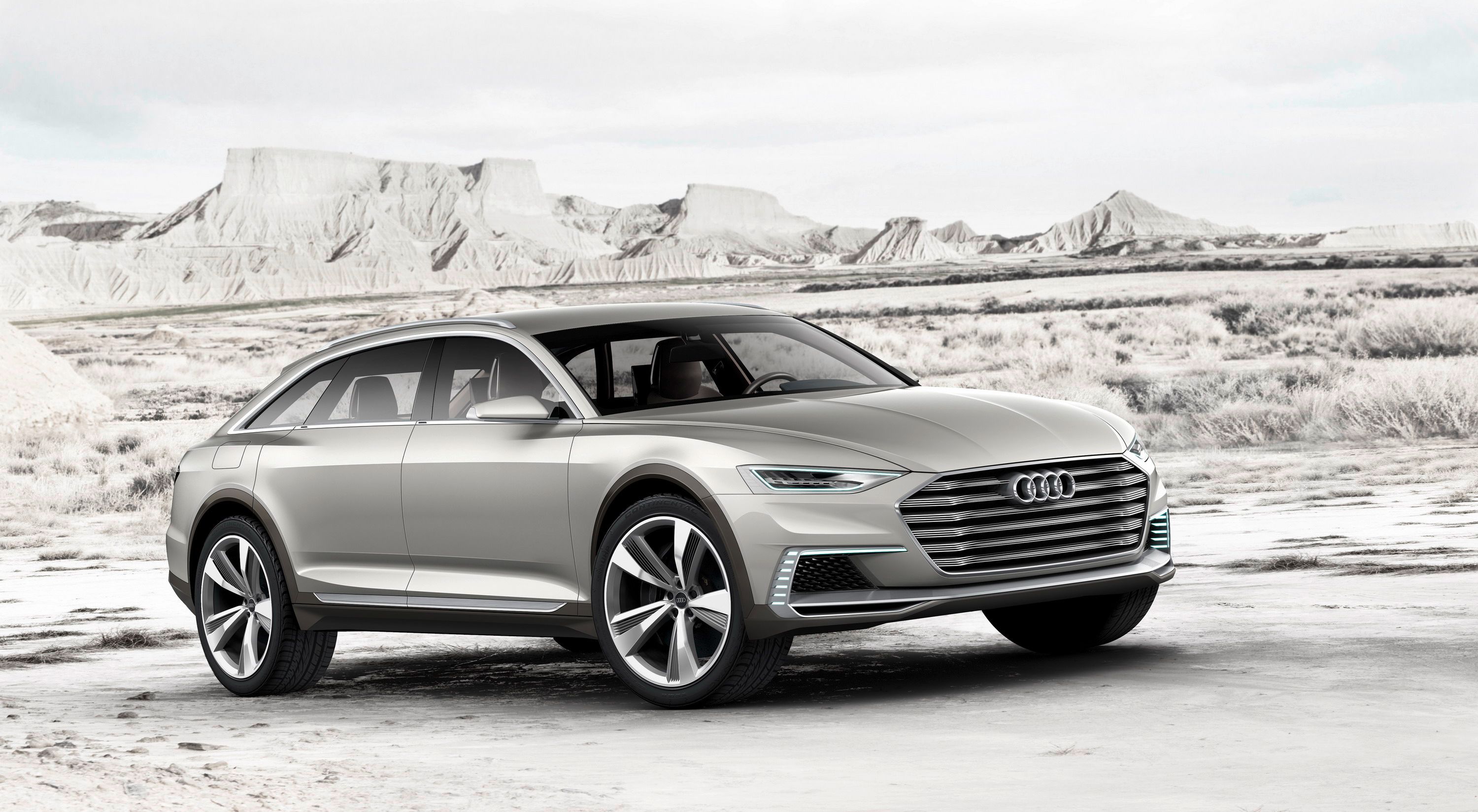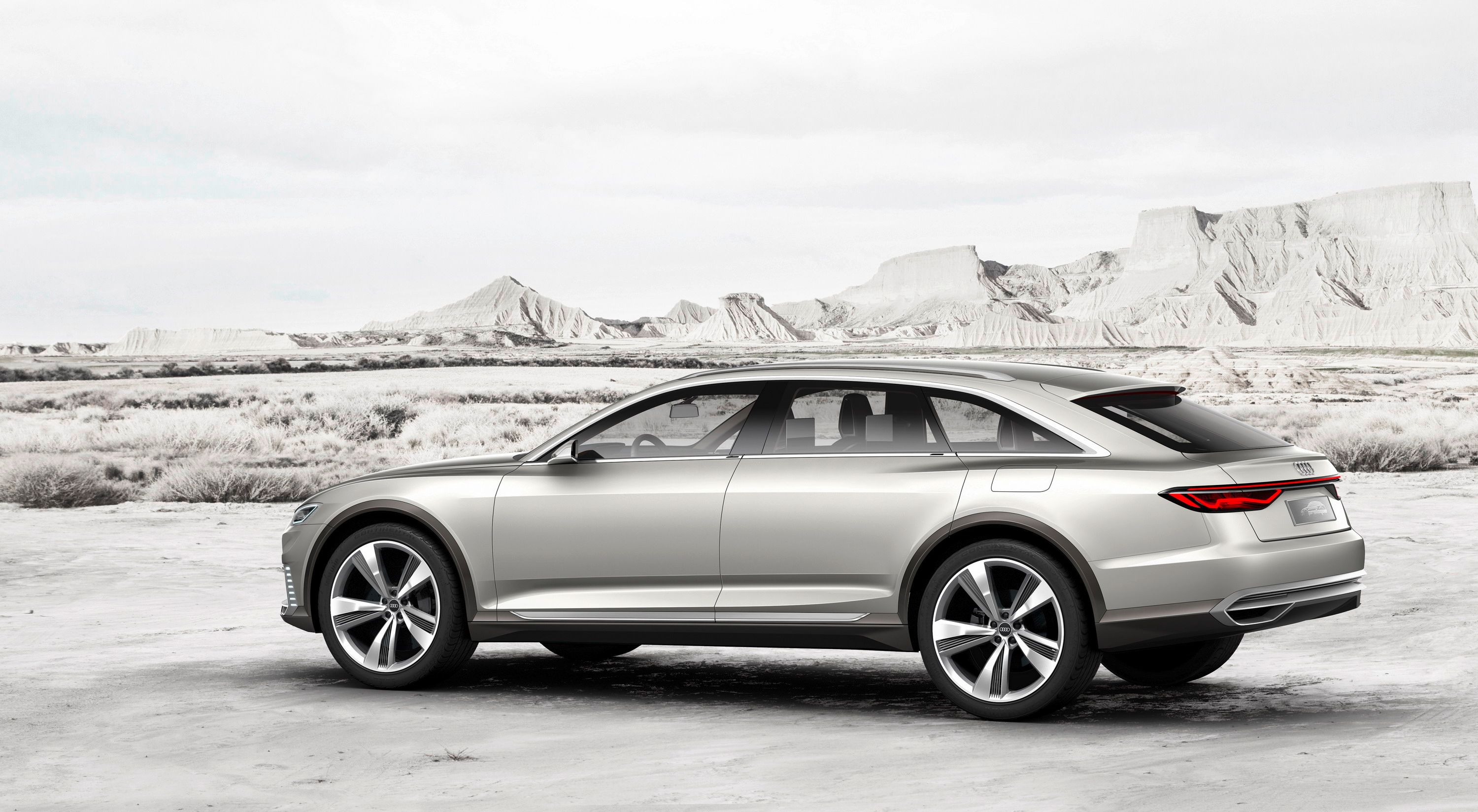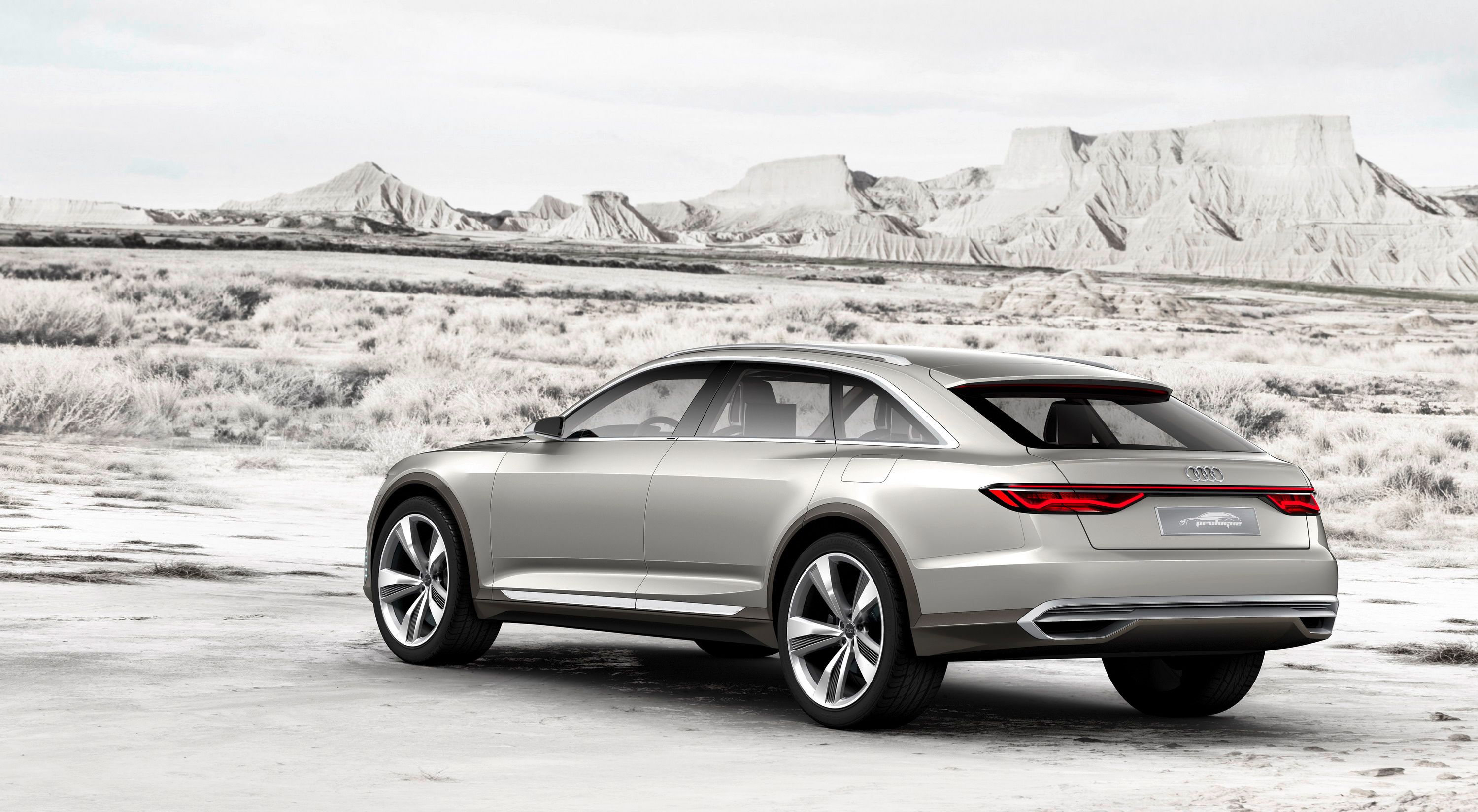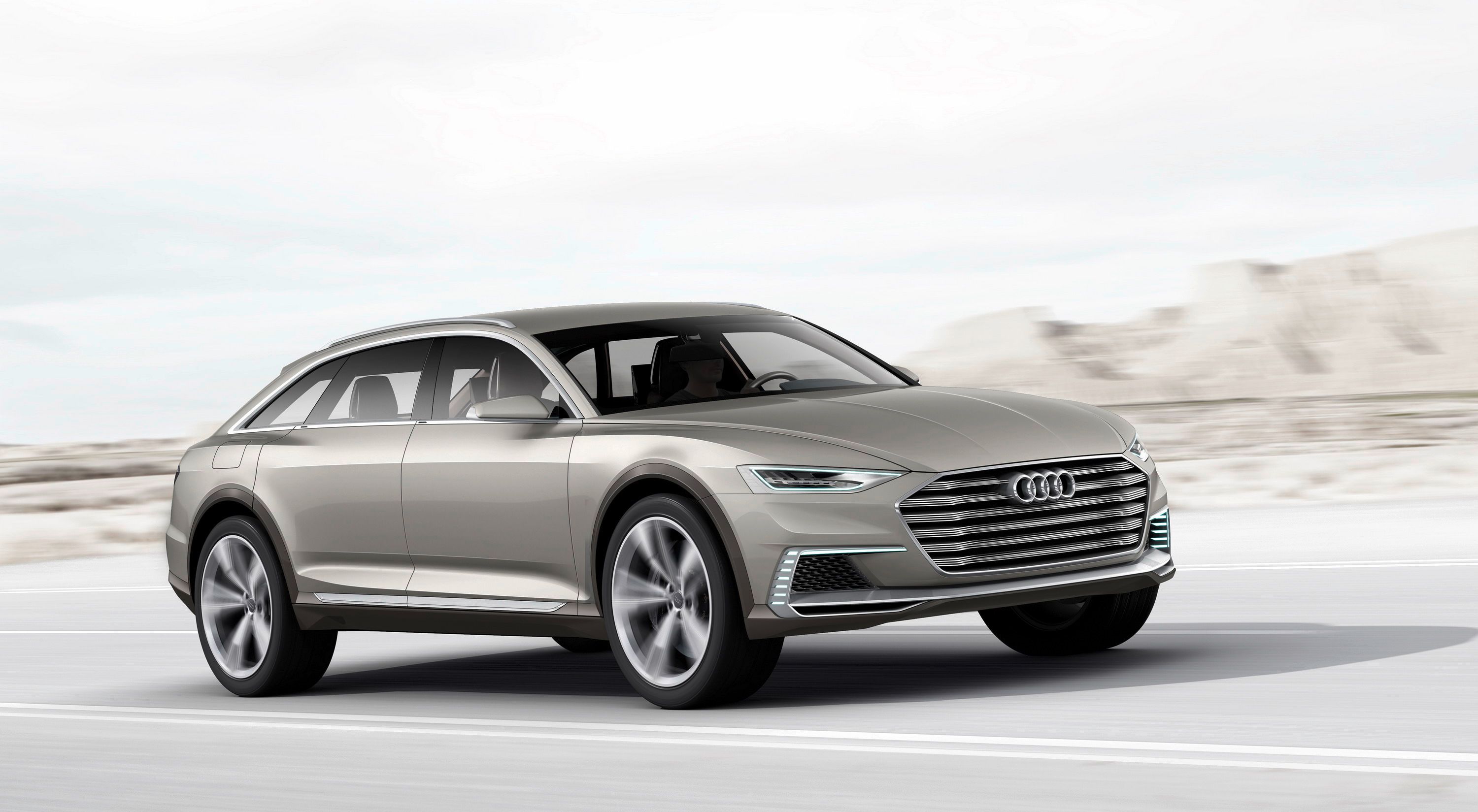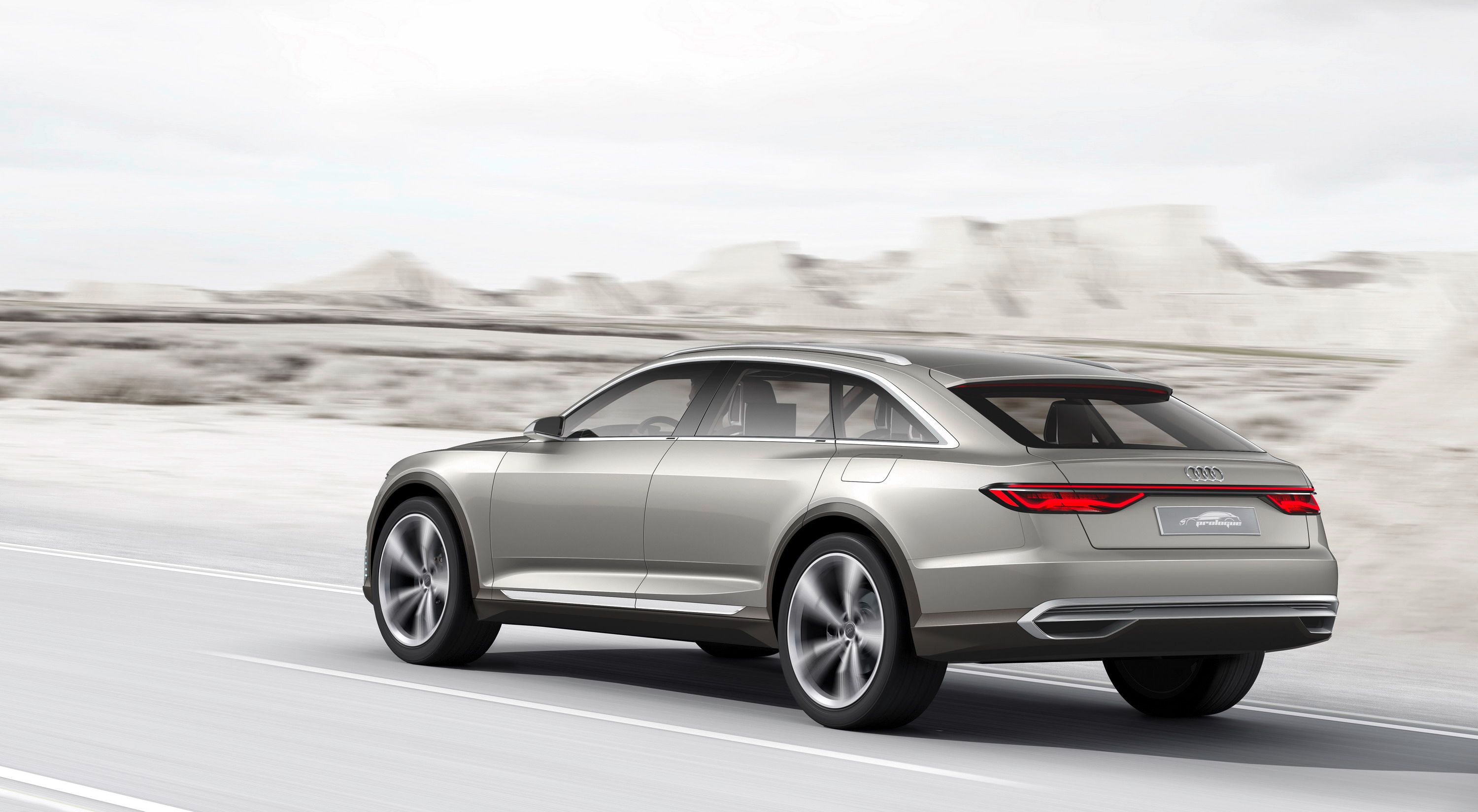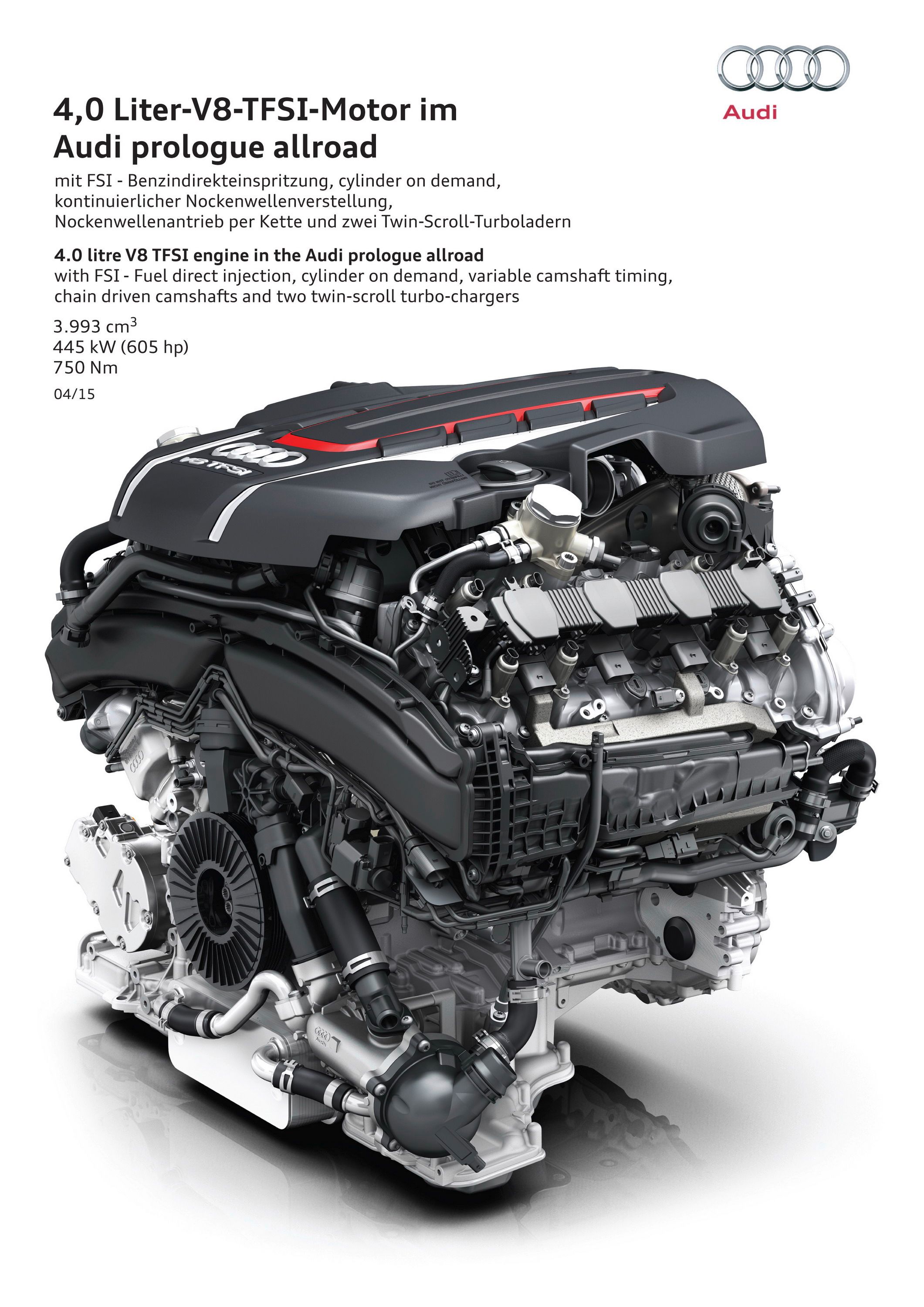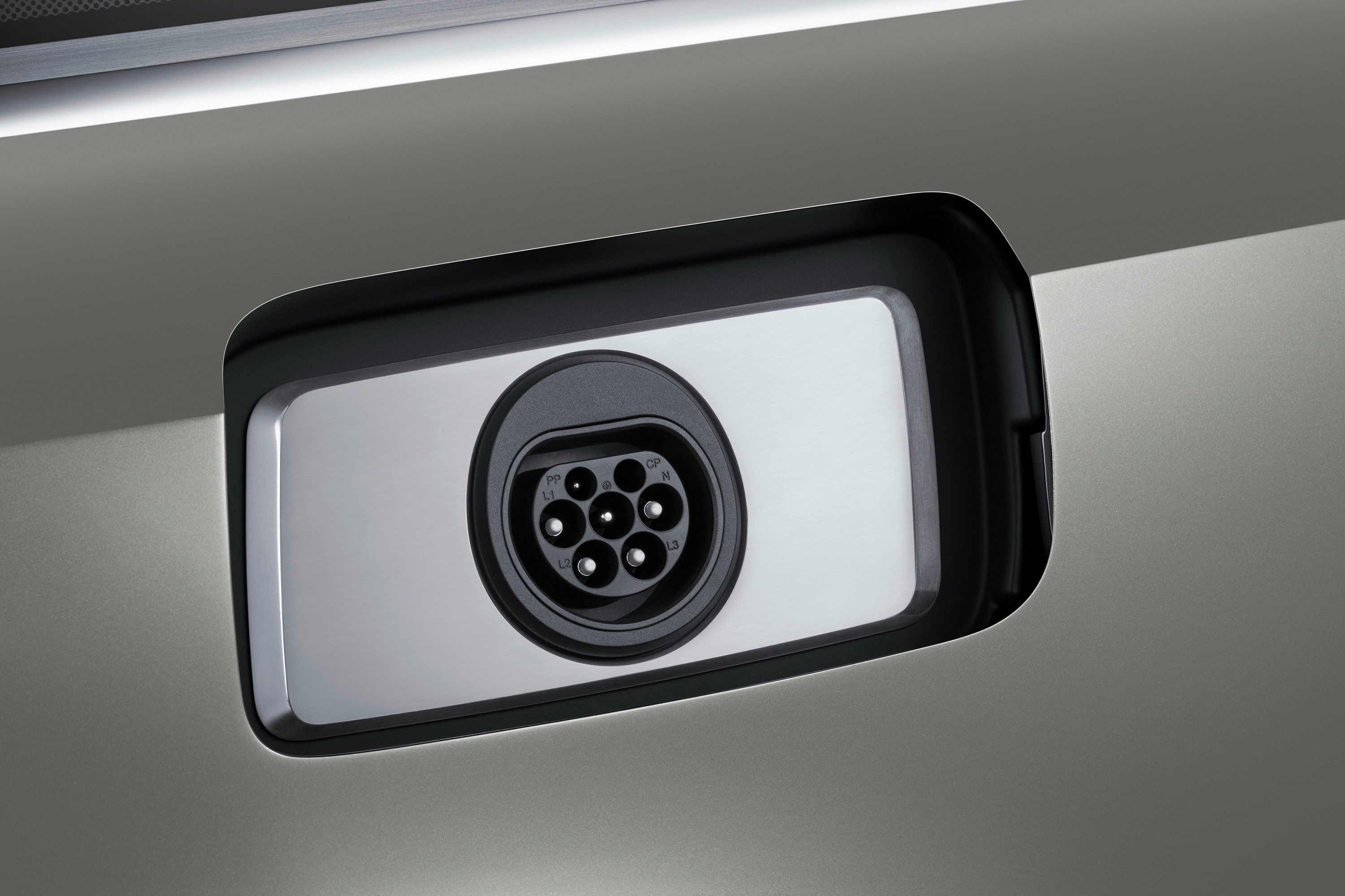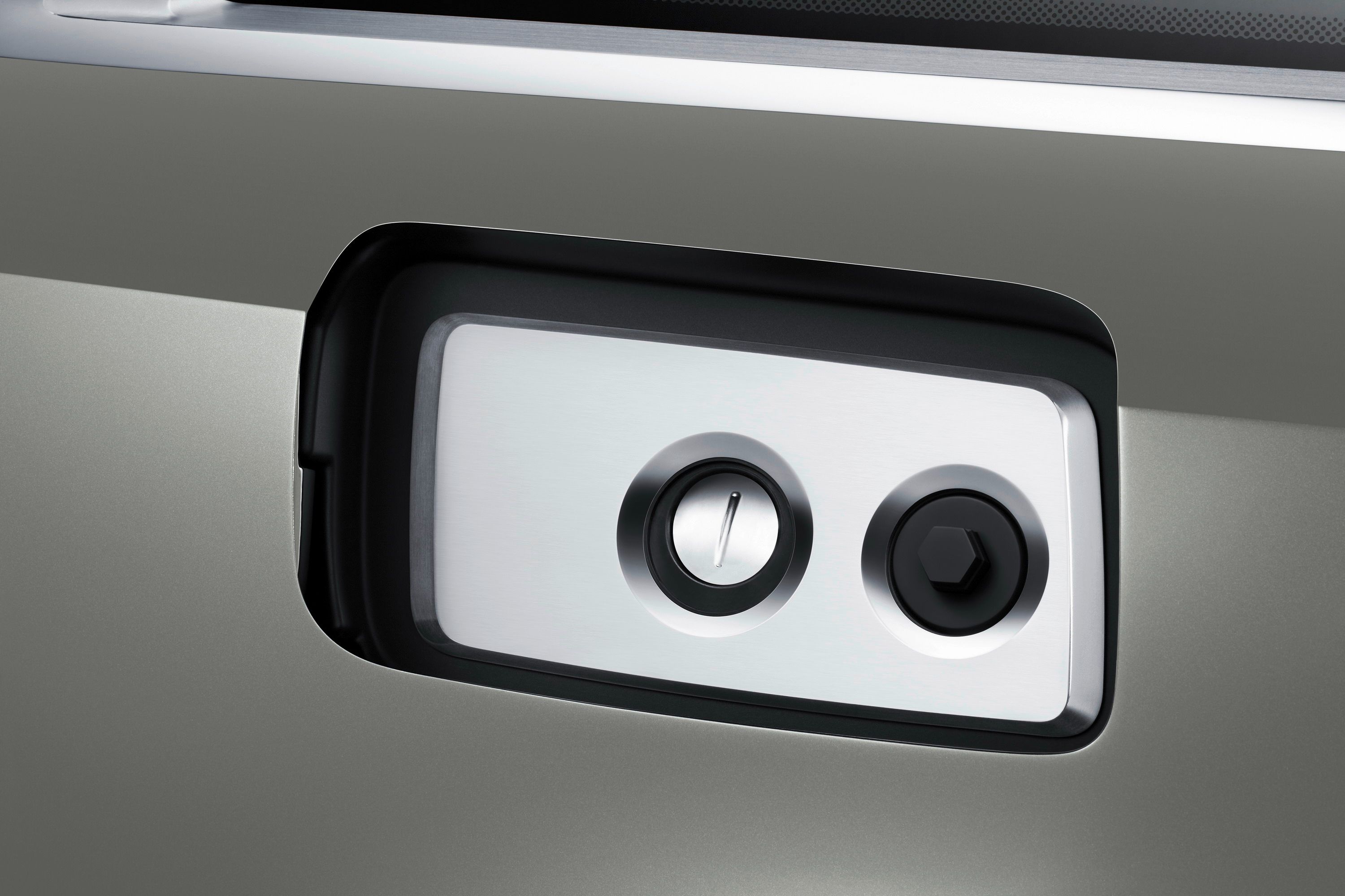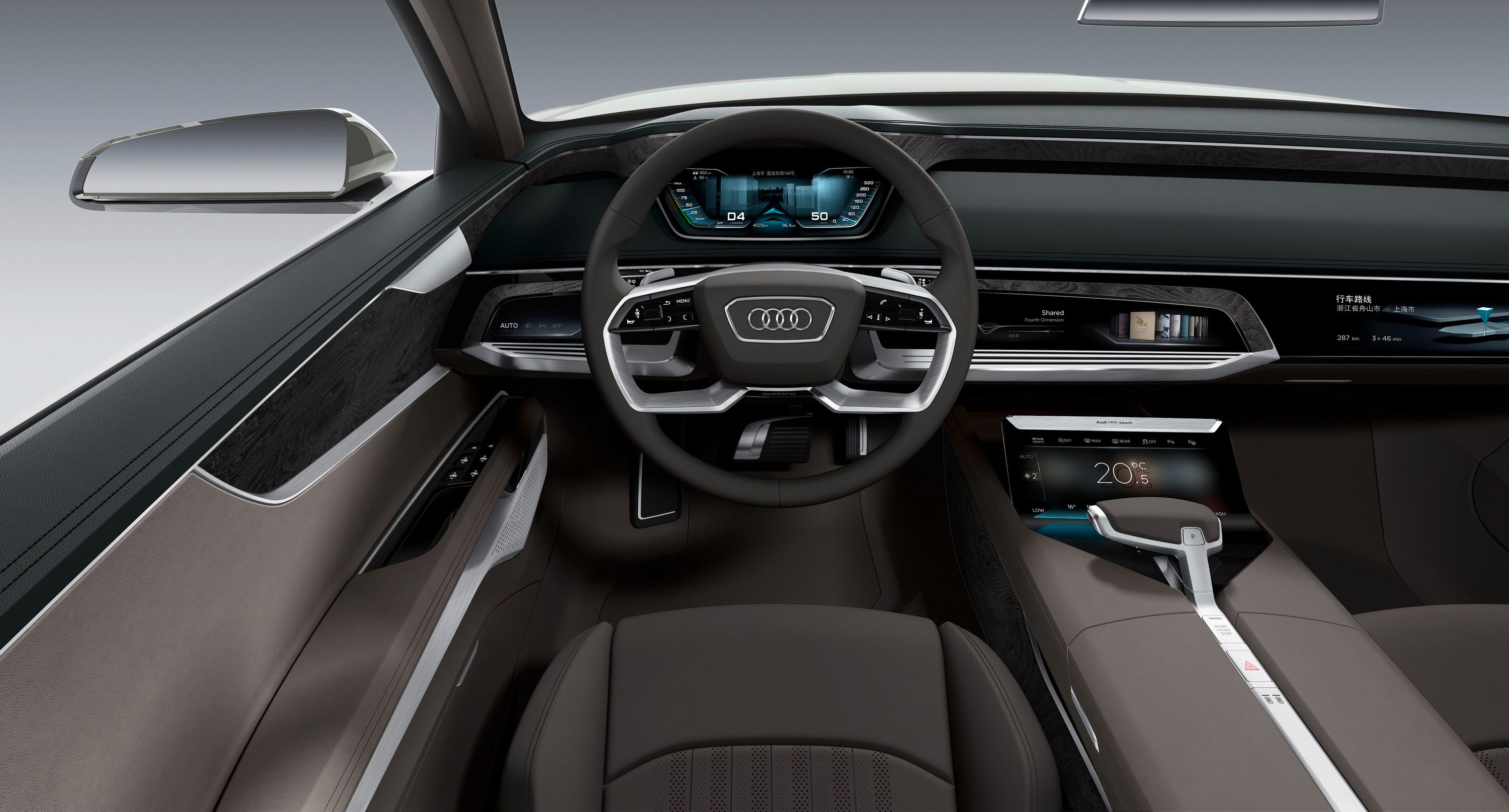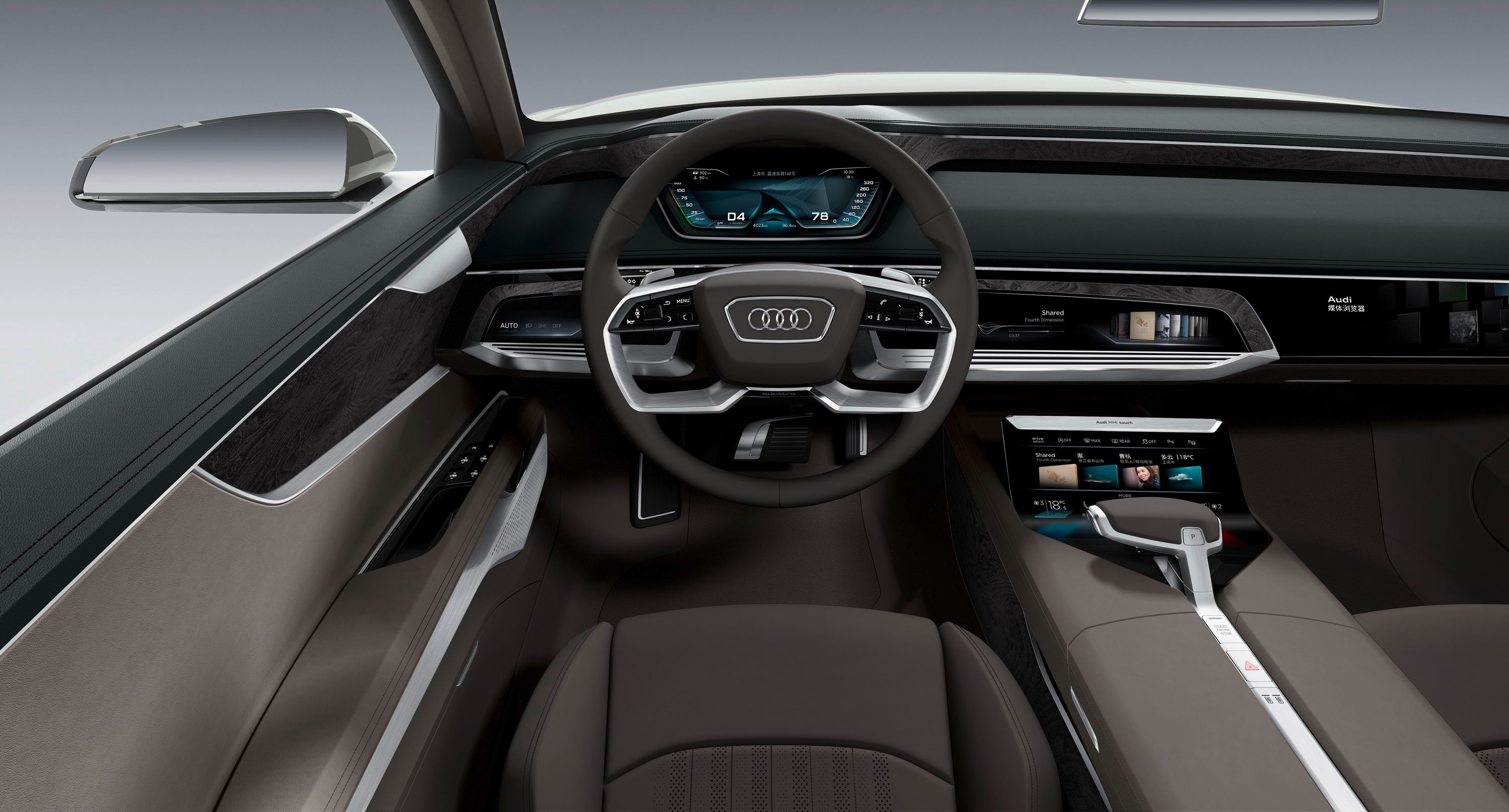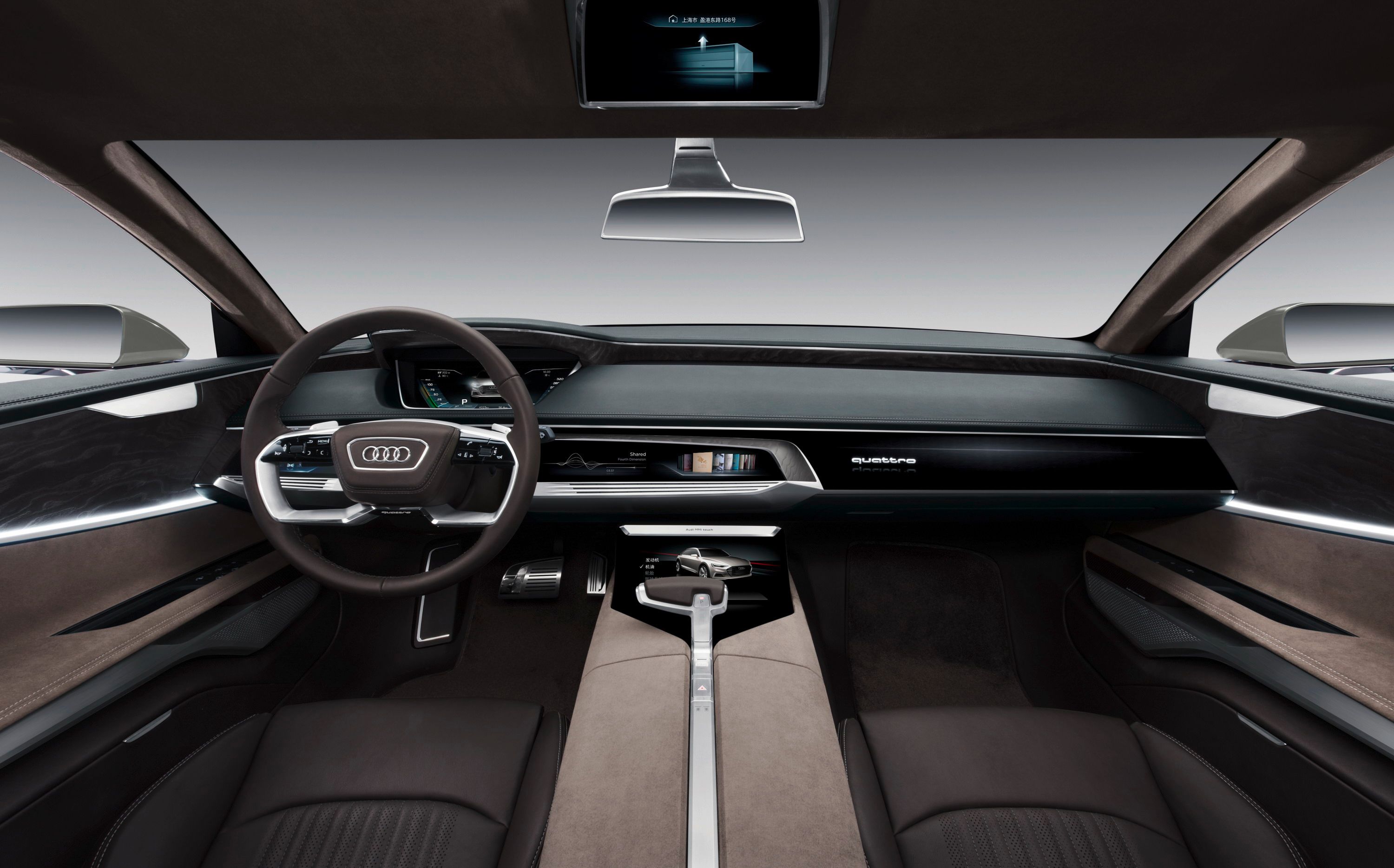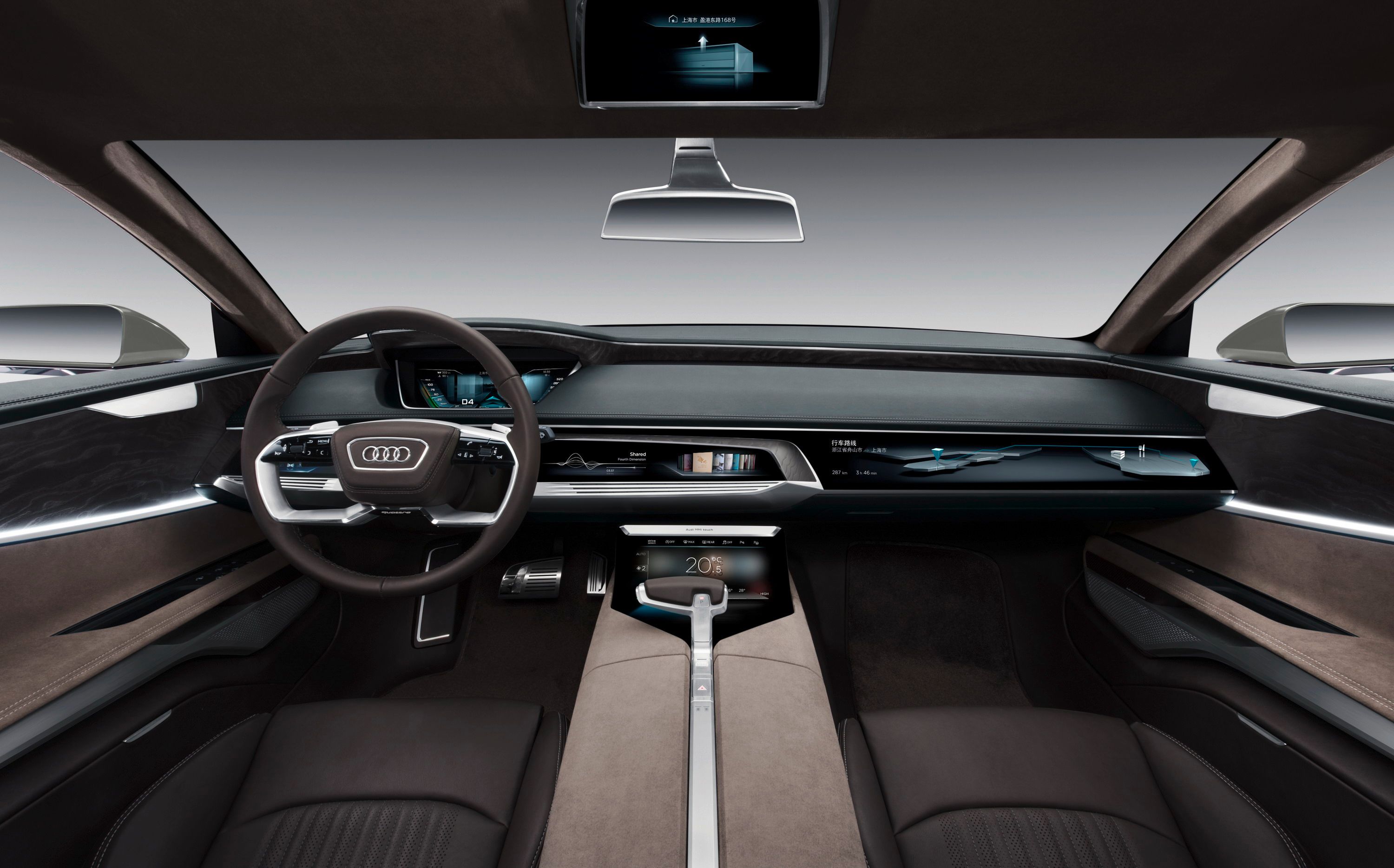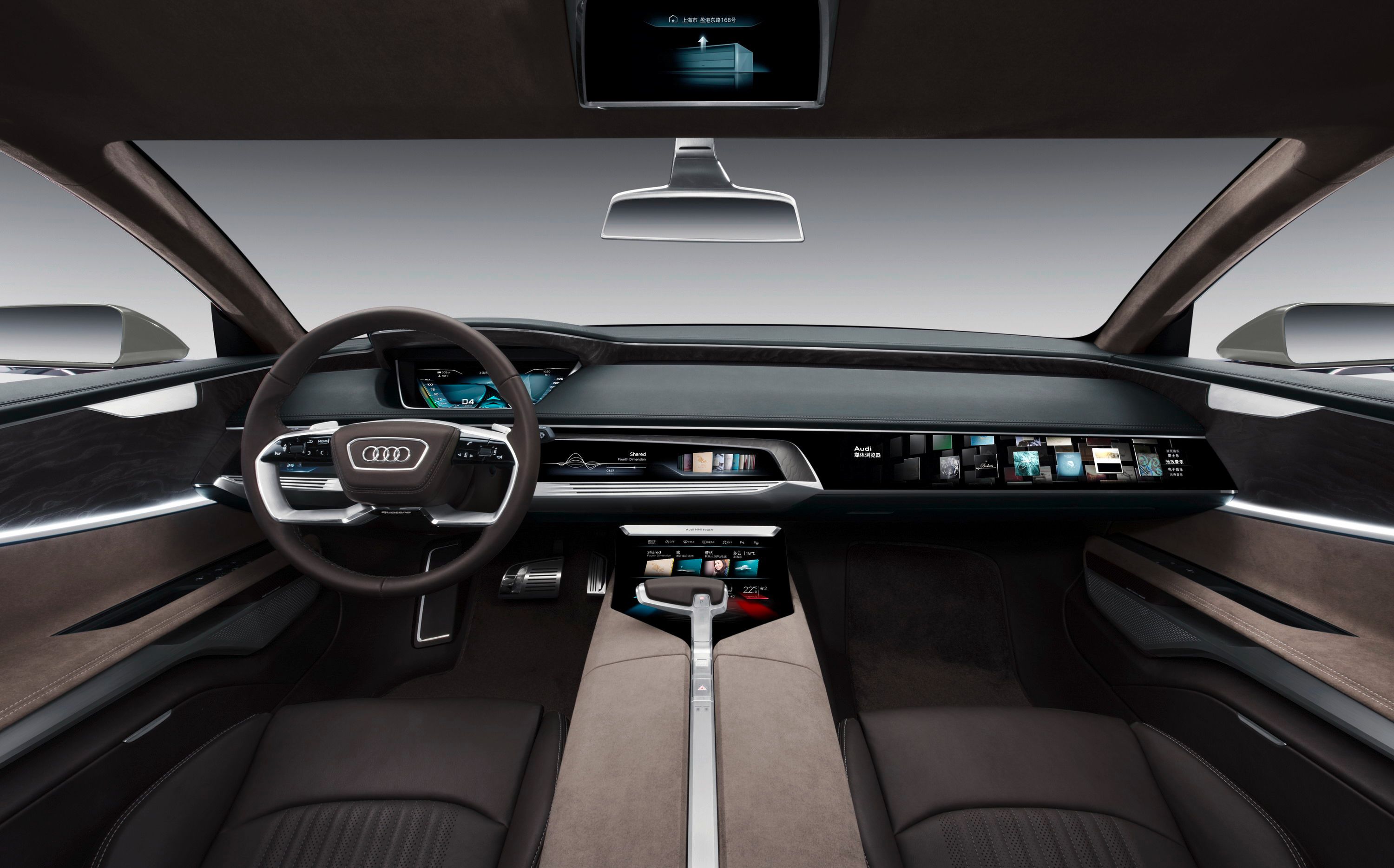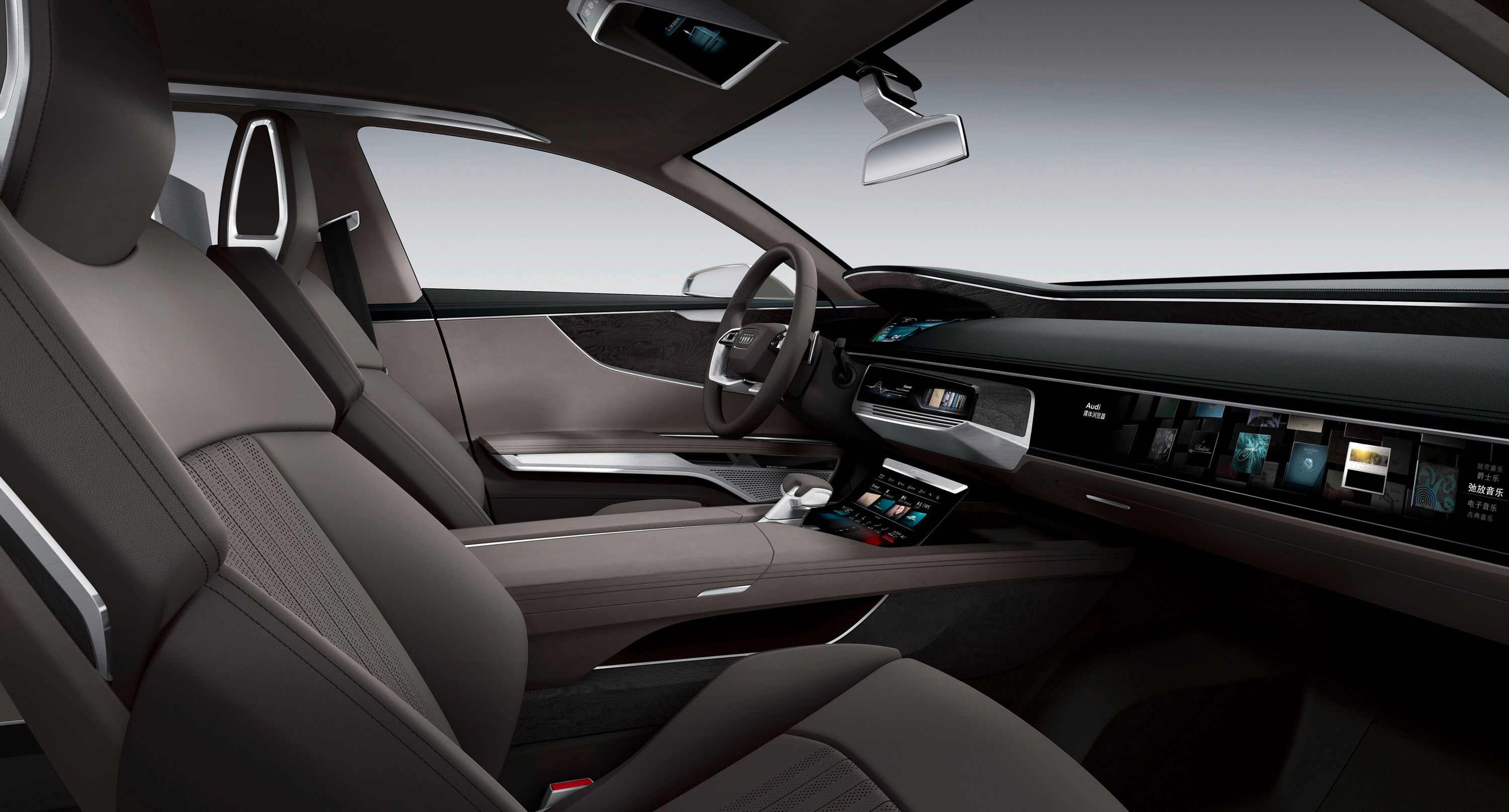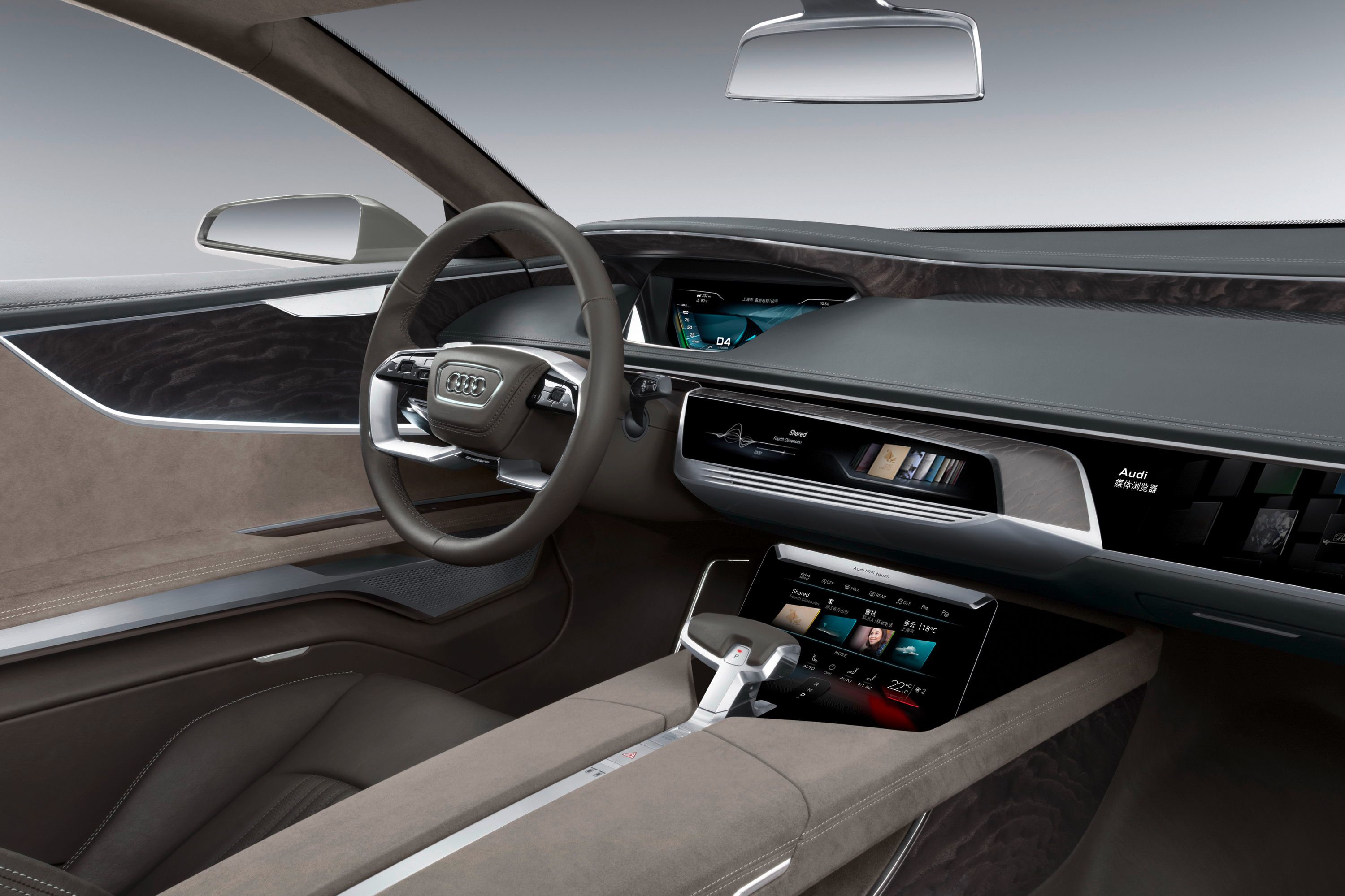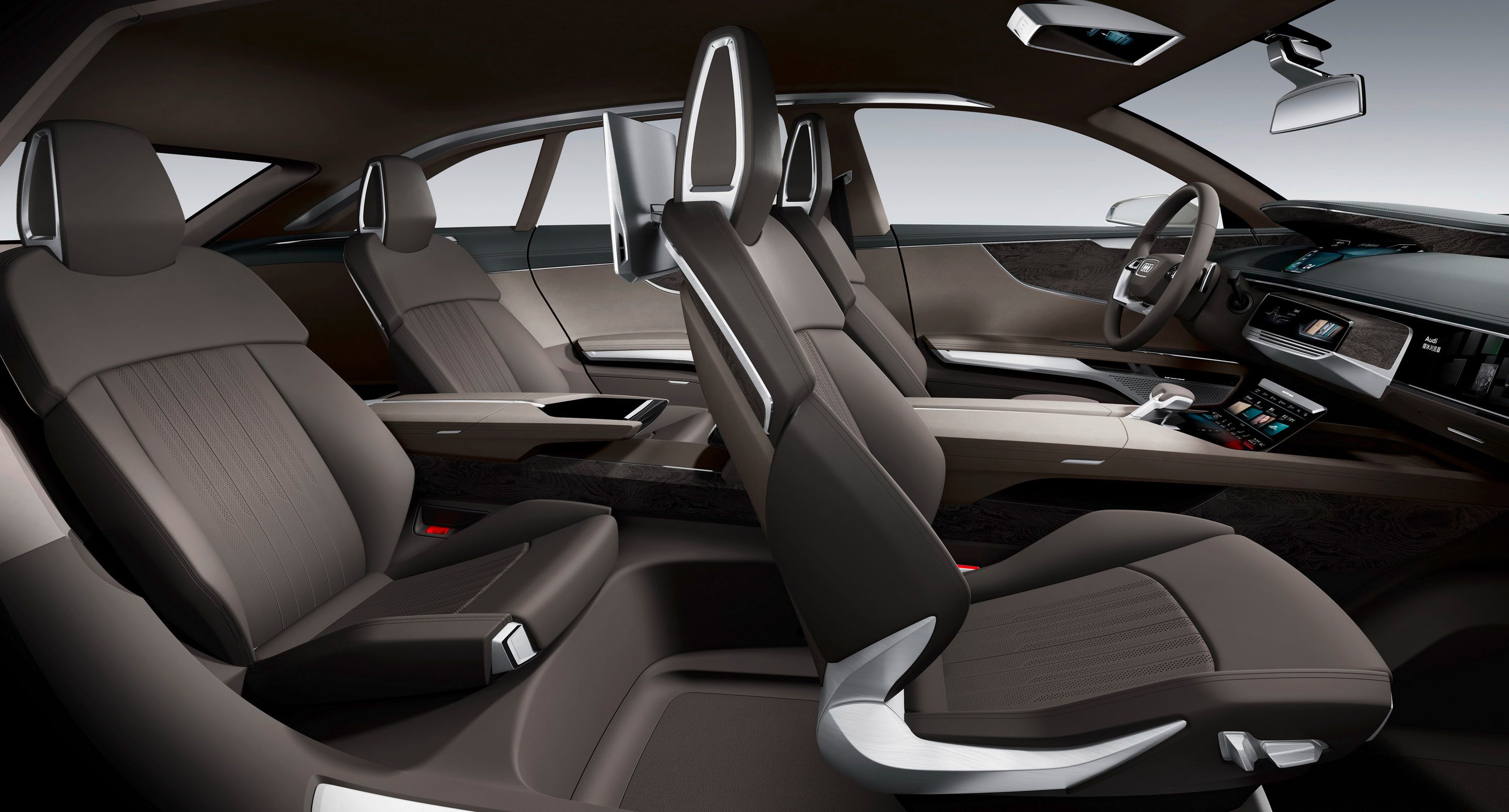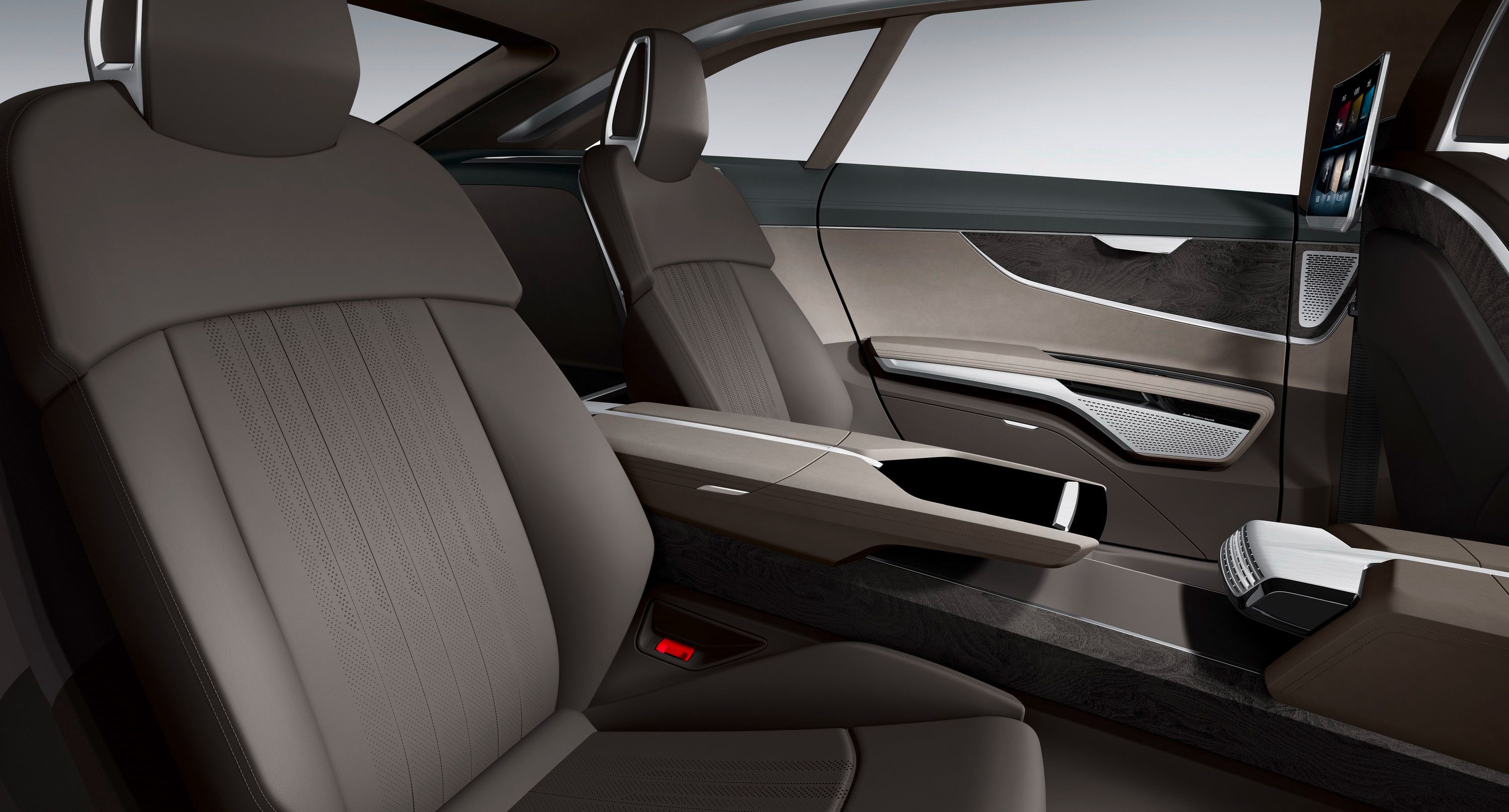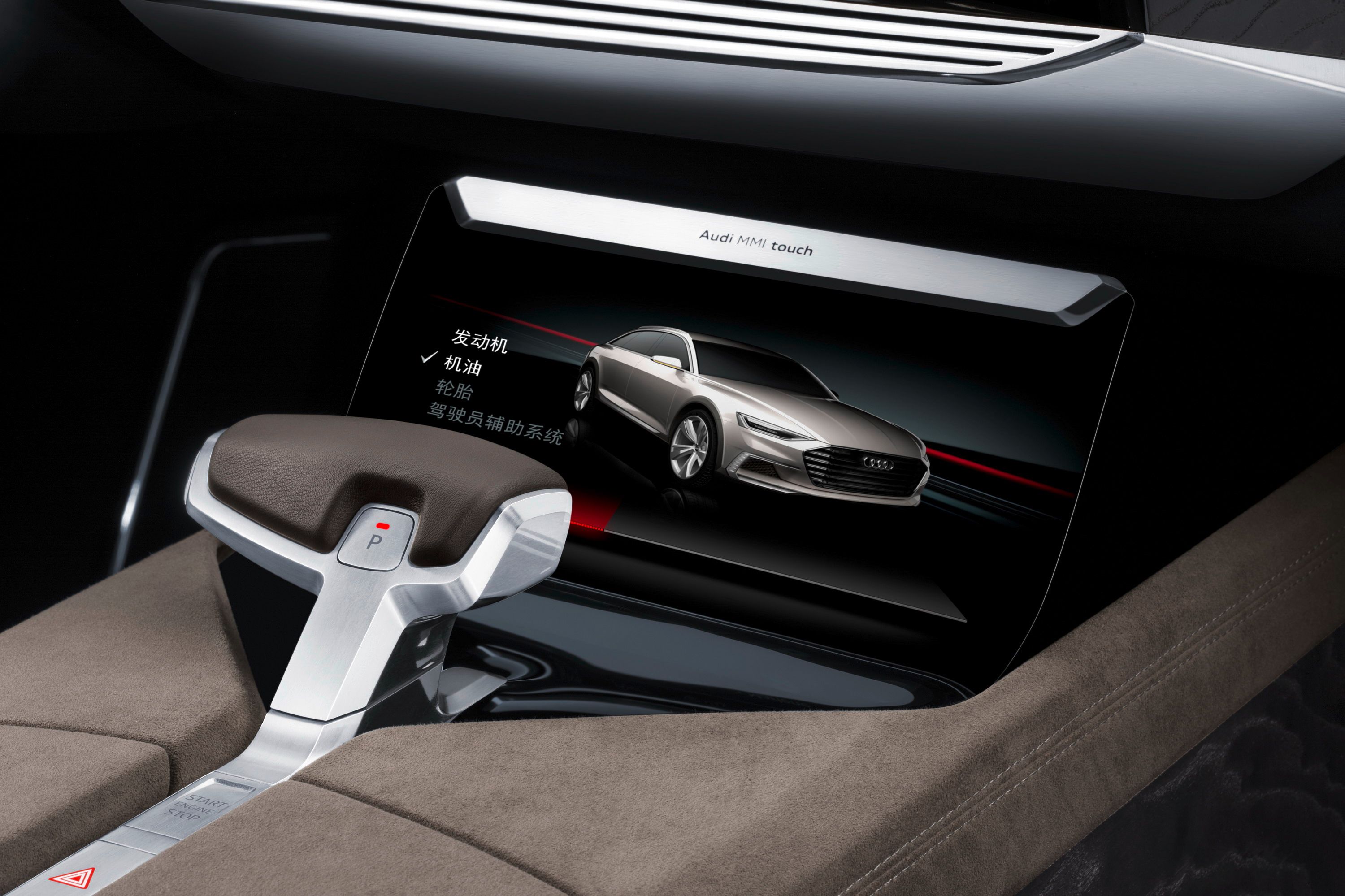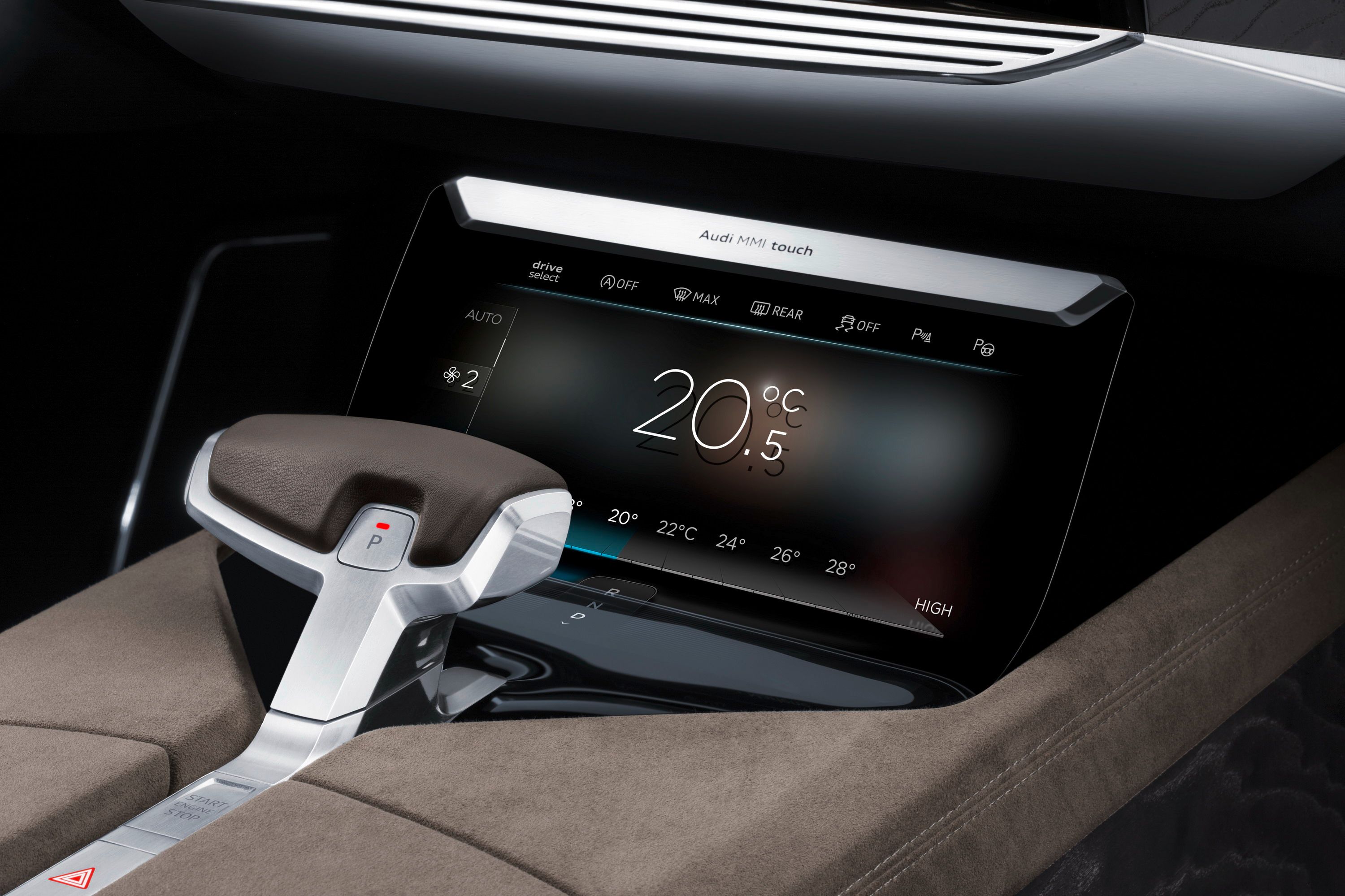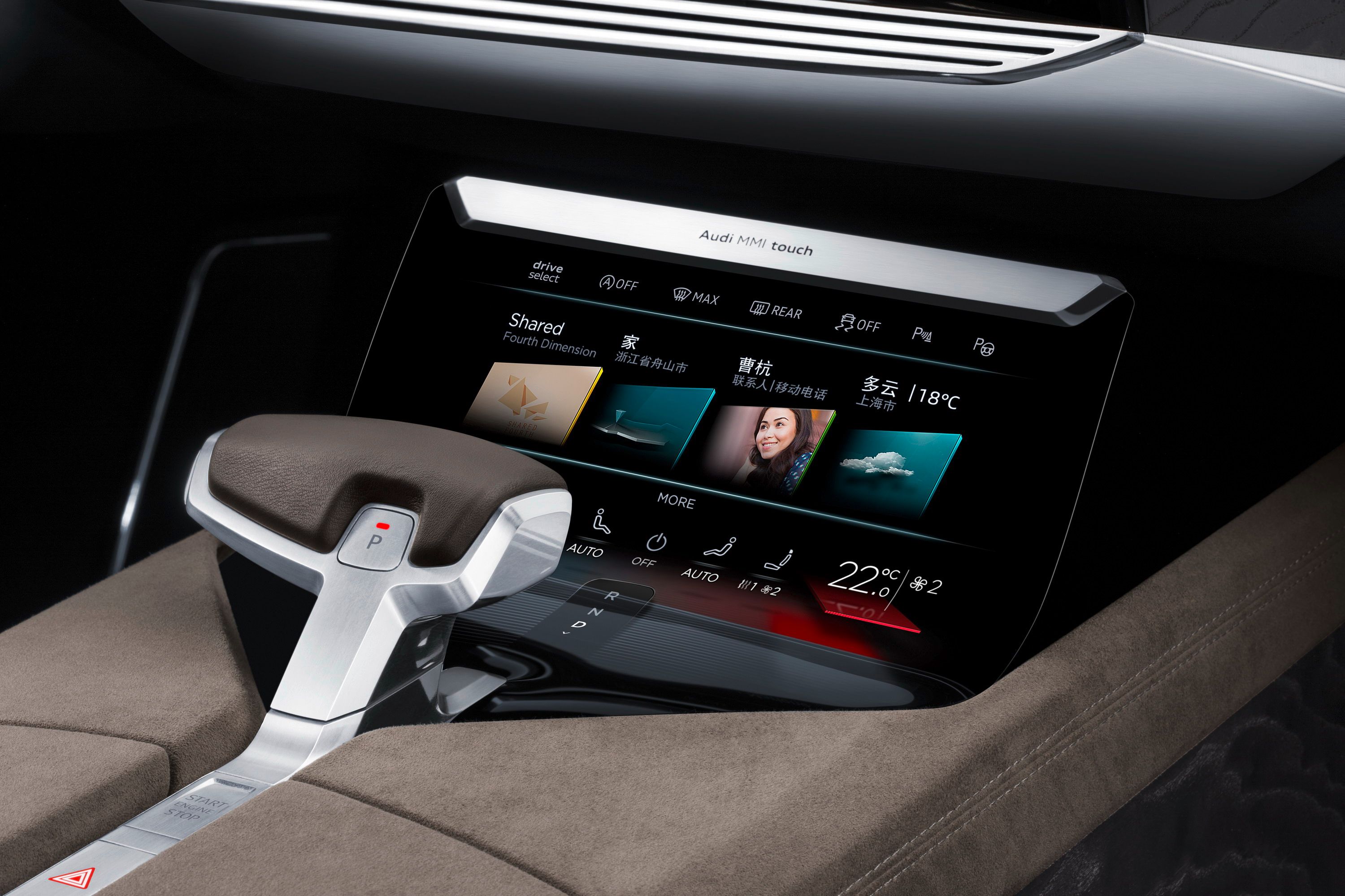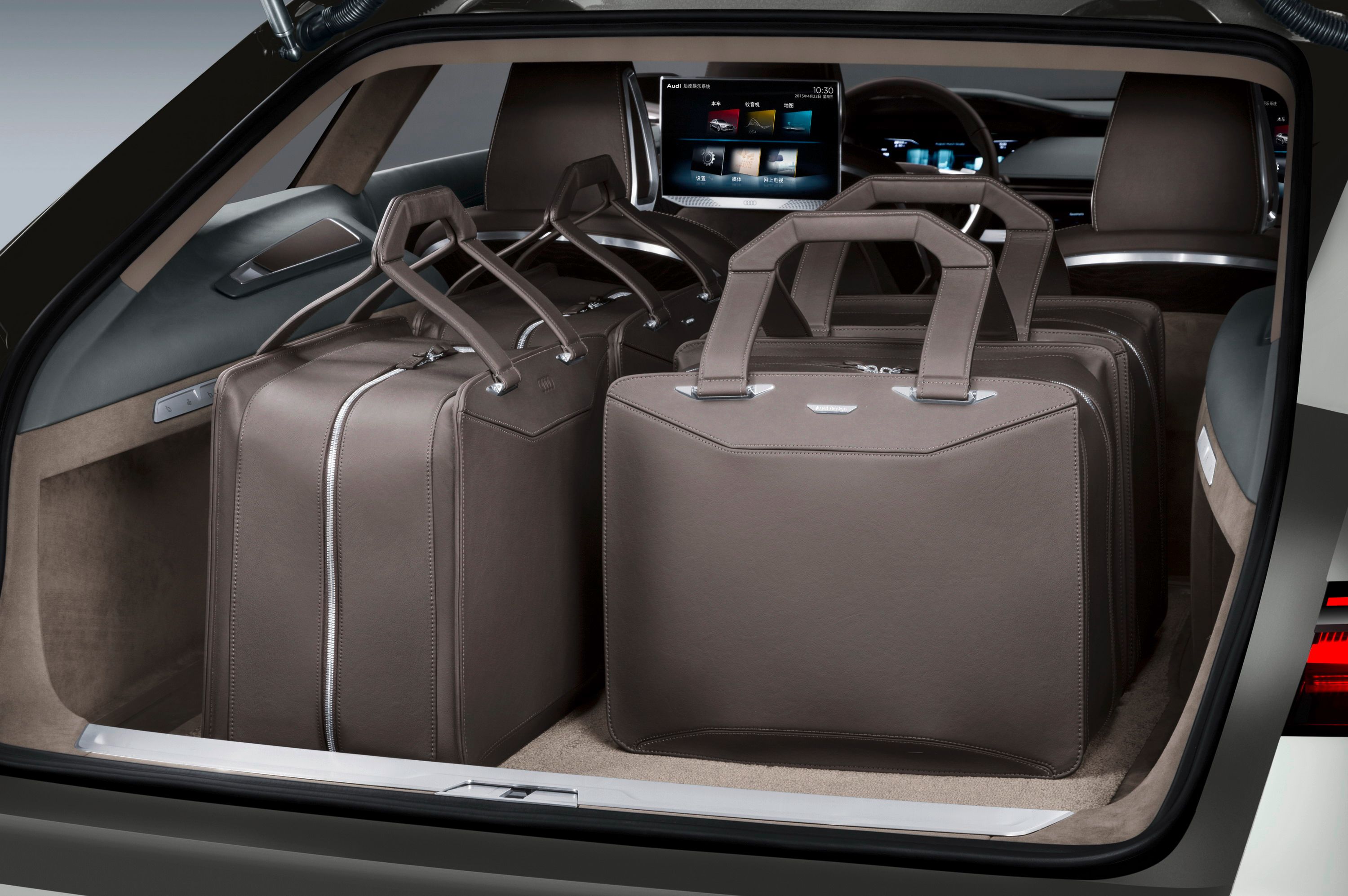Audi->ke14 has unveiled its latest Prologue concept car,->ke169 and it’s a hybrid->ke147 wagon with over 700 horsepower, 20-inch brake discs, and a digital butler that caters to your individualized tastes. It’s called the allroad, and it serves as a reimagining of the German brand’s highly practical A4->ke1087 and A6->ke934 allroad models, sporting a new exterior design language, a high-tech interior, and a cutting-edge drivetrain. Audi says it can do it all, and if even half of the proposed features and specs make it to production, I’d be inclined to agree.
The new five-door will appear in public for the first time at this year's Auto Shanghai show.->ke2470 This is the fourth Prologue vehicle we’ve seen from Audi, with the 2014 Prologue Coupe revealed in 2014 at the LA Auto Show,->ke211 the 2015 Prologue Piloted Driving Concept at CES->ke3008 2015, and the 2015 Prologue Avant revealed in Geneva->ke228 this year.
The Prologue allroad comes with some pretty wild claims – supposedly, it’s fast but economical, sensible but comfortable. But all things considered, that’s par for the course for concepts. It’s one possible vision of things to come from the four-ring badge, which means all we can do is sit back and ask: why not?
Continue reading to learn more about the Audi Prologue allroad.
2015 Audi Prologue Allroad
- Make: Array
- Model: 2015 Audi Prologue Allroad
- Engine/Motor: V8
- Horsepower: 734
- Torque: 663
- Transmission: eight-speed tiptronic
Exterior
As part of Audi’s Prologue series of concept vehicles, the allroad show car features new exterior design language for the German automaker. Part of this is seen in the thin, wedge headlights and lower LED-lined air inlets bisected by the bumper blade. The headlights are outfitted with Matrix laser technology, which uses “countless tiny pixels” to distribute the light in “virtually boundless” configurations. Viewed head-on, an enormous single-piece grille sporting brushed aluminum crossbars takes precedence in the front fascia. This piece sits evenly with the rest of the body, and uses a shape seen in current production models.
Viewed in profile, we can see just how long this vehicle really is. At nearly 17 feet, the Prologue allroad is the same length as the A8.->ke1089 The stretched hood line visually extends the vehicle to equalize with the gently descending roofline. The wheel arches are high and flared, fitting positively massive 22-inch five-spoke wheels. Vehicle height is three inches taller than the Prologue Avant.
In back, simple horizontal lines for the taillights and rear apron emphasize the car’s width. The taillights use LEDs and 3D glass for a more dynamic look. Split openings in each bottom corner integrate the exhaust into the overall design structure.
Finished in Dehua White paint, the Prologue allroad has many smaller details to tie it together visually. You’ll find aluminum accents in the roof rails, mirror housings, and window surrounds, while a raised gray offset runs the length of the car from the wheel arches to the side skirts.
Interior
When the Prologue Coupe concept was unveiled in LA, the interior was strictly off limits. This time around, Audi is ready to share a glimpse into the cabin space, hoping to provide an appointment that combines elegance and functionality with the latest technology.
Thanks to its large exterior dimensions, the allroad’s insides are roomy. There’s seating for four, and many components are shaped in pleasing geometric designs. Like the exterior, horizontal contours in the instrument panel, center console and doors visually enhance the car’s natural proportions. A wraparound element present in the upper portion of the console extends rearwards into the luggage space. A perforated trim panel covers the air vent, retracting when the A/C is set to high.
The front console also uses three individual touch displays for infotainment and driver information duties. An aluminum surround frames the driver’s displays located on either side of the steering wheel, while the front passenger can browse infotainment options on an adjacent widescreen display. The passenger can also send information to the right-hand driver’s display or virtual cockpit with a single swipe. The virtual cockpit uses three semi-transparent mirrors to generate a three-staged information display in the driver’s field of vision, making stuff like mileage, velocity and battery charge easily accessible.
A large central console tunnel houses yet another touch display for climate control, infotainment, and text input. This features OLED technology and uses a thin, flexible film for HD images. When the car is off, the display retracts flat, and angles upward when the car is started.
In the rear, each passenger enjoys his own seat, along with additional OLED displays in the center console to adjust seating position, climate control, infotainment and communication with the driver. A “sound spoiler” extends from the rear wheelhouse panels to broadcast music equally throughout the cabin. There are also thin OLED tablets mounted in the back of the front seats for even more infotainment functionality.
An intelligent software program dubbed the “butler” provides further personalization. By identifying passengers from signals emitted from their smartphones, the butler automatically adjusts parameters like seating position, climate control, and music to fit each individual’s tastes. The navigation also customizes suggested routes according to the driver’s preferences. An “Easy Slot” inductive charging system keeps cell phones charged.
The top portion of the instrument panel is finished in Lifestyle Blue, while the seats, carpeting, and lower half of the panel come in Sard Brown. The wraparound boasts open-pored, dark fine-grain ash veneer, which extends to the doors and center console. Aluminum is used for accents. Unicum leather upholstery is present in the instrument panel, console tunnel and seats, while a band of Alcantara connects the door inserts and luggage compartment. Finally, window-capping strips use sensors to automatically lock the doors after exiting, while the covers for the charging port and fuel tank are electric.
Drivetrain
Audi claims it has endowed the Prologue allroad with a hybrid->ke147 drivetrain that’s capable of both lightening-fast performance and earth-friendly economy, while the chassis and suspension supposedly provide both comfort and a modicum of off-road capability.
That’s quite the incredible combo, but under the hood, we find the right bones to get it done. Powering the Prologue allroad is a 4.0-liter TFSI ICE with a double helping of turbochargers. Mated to this unit is a single electric motor that boosts output to a grand total of 734 horsepower and 664 pound-feet of torque. An eight-speed tiptronic gearbox routes the power through Audi’s iconic quattro AWD system.
Claimed performance figures include a blast to 60 mph in 3.5 seconds. However, that velocity shouldn’t come at the price of frequent strops at the pump, as the hybrid is supposedly capable of 98 mpg. Emissions look like 56 g/km. The electricity comes from a rear-mounted lithium-ion battery with a 14.1 kWh capacity, pushing the Prologue allroad 33.6 miles in emission-free driving mode. Additionally, Audi says the vehicle can be charged inductively, and has stated it will develop the system for series production some time in the future.
Finally, with so much power, you’d be right to expect the chassis to be equally as capable. Under the 22-inch wheels are positively gargantuan 20-inch brake rotors made from carbon-ceramic material. The suspension is an adaptive air sport setup offering a range of settings for either comfort or performance. There’s also all-wheel steering using a variable-ratio, dynamic steering unit to rotate the large vehicle with a bit more grace.
Drivetrain Specifications
|
Type |
4.0 TFSI V-8 + electric motor |
|
Output |
734 HP |
|
Torque |
663.8 LB-FT |
|
Transmission |
eight-speed tiptronic |
|
0 to 100 km/h (62.1 mph) |
3.5 seconds |
|
Purely electric range |
54 kilometers (33.6 mi) |
Prices
As a concept car, the Prologue allroad doesn’t come with a sticker price. However, given the amount of tech and speed you get from this one package, I wouldn’t be surprised if a production version cost between $160,000 and $200,000, slotting it above the sporty RS6->ke1305 Avant in terms of catalog placement.
Competition
Using technology first developed during the creation of the 918->ke3629 hypercar, the electrified Panamera->ke1840 seeks to combine economy and performance with luxury and practicality. While generally not considered the prettiest car in Porsche’s->ke1 lineup, the Panamera gets it done with large alloy wheels, a low and wide body, and that trademark Porsche beak. Inside, there’s plenty of luxury, like leather upholstery, brushed aluminum trim, and comfortable seating for four.
The most interesting facet is the powerplant, which consists of supercharged 3.0-liter V-6 and electric motor that combine for 416 horsepower and 435 pound-feet of torque. Launch from a stop and you’ll hit sixty mph in around five seconds, charging on to a 180 mph top speed.
Read our full review here.
Tesla Model S
While many have tried, no one has been able to topple the highly venerated Tesla Model S->ke3329 for all-electric vehicle supremacy. From the outside, the sedan->ke142 looks good, with muscular proportions and simple, elegant lines. You’ll find tons of tech in the cabin, like large high-definition screens and a semi-autonomous driving function. For motive power, Tesla offers a variety of electric options, from the entry-level 60 kWh model with 380 horsepower, to the top-range P85D boasting 691 horsepower. Range varies between 208 and 295 miles. Prices start at $69,900 and rise to $120,170 for the P85D.
Read our full review here.
Conclusion
Audi is bringing some pretty cool ideas to the table with this latest Prologue concept. Visually, it’s a reasonable continuation of the new design language, a break from the nearly static aesthetics Audi is infamous for. I’m not the biggest fan of that gaping maw of a grille, but that’s just me. On the other hand, I think the laser headlights and LED taillights are wonderful, and the overall shape of the wagon is quite handsome (albeit a bit large).
The interior design is equally pleasing. The layout feels fresh but comfortable, while the various gadgets mimic industry trends with typical Audi panache. You can never have too many screens, and the digital butler is a logical next step in customization.
The drivetrain seems outlandish at first, but not necessarily implausible. The $142K RS6,->ke1305 for example, hits 60 mph in under four seconds with 560 horsepower from its 4.0-liter V-8. Throw on another two hundred horsepower and an electric motor, and three and half seconds sounds reasonable, although 98 mpg might be optimistic.
Most interesting, however, are Audi’s intentions to develop an inductive charging system. This is a clear indicator of the brand’s electrified future, and is sure to charge the rumor mill when it comes to speculations about future hybrid models.
For now, we’ll have to wait and see what else Audi might deem worthy of full-scale production. Hopefully, the list includes that 700-horsepower hybrid drivetrain, real-world mileage figures be damned.

